Foreign Universities in India: A New Era in Higher Education
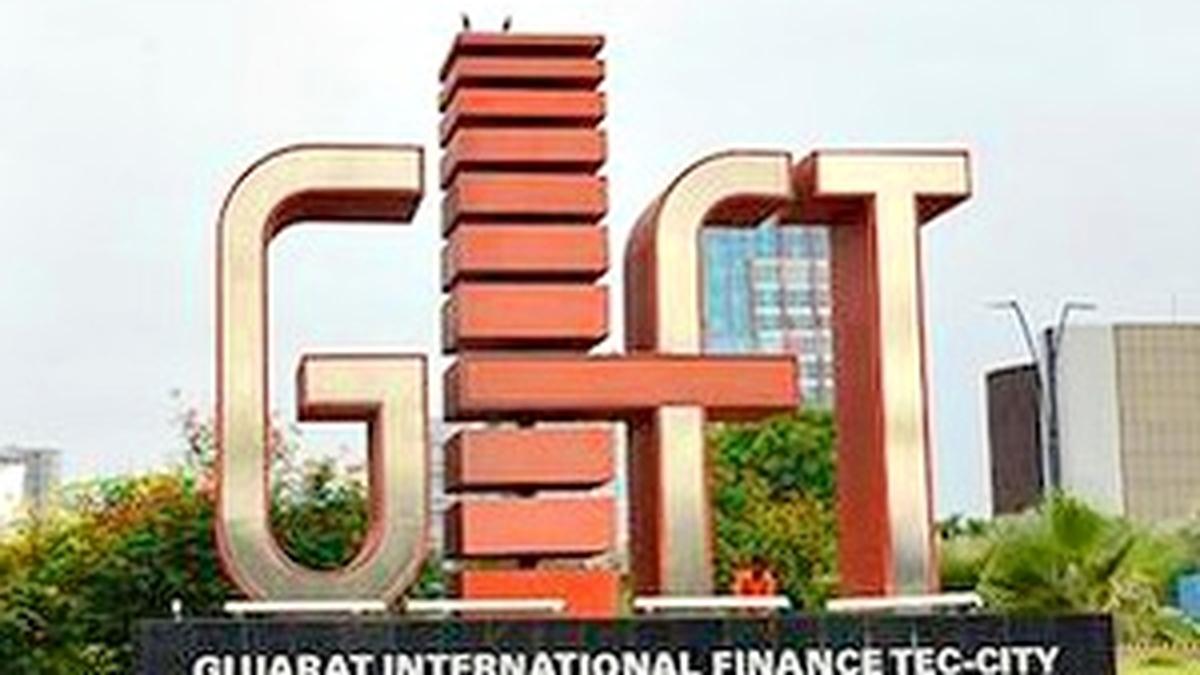
- 30 Jun 2025
Context:
India is witnessing a transformative moment in its higher education sector with globally reputed foreign universities preparing to set up campuses within the country. Enabled by the UGC (Setting up and Operation of Campuses of Foreign Higher Educational Institutions in India) Regulations, 2023, and inspired by the vision of the National Education Policy (NEP) 2020, this move could reshape the academic landscape. Locations such as GIFT City (Gujarat) and Navi Mumbai have been identified as early sites for these institutions. As of mid-2025, seven universities from the UK, five from Australia, and one each from the US, Canada, and Italy have initiated or secured regulatory approvals.
Drivers of Foreign University Interest in India
- Demographic and Economic Potential:India hosts over 40 million students in higher education, with a Gross Enrolment Ratio (GER) below 30% (AISHE 2021–22), indicating untapped potential. A growing urban middle class, rising aspirations, and the need for globally competitive education have made India an attractive destination.
- Global Decline in Student Numbers:Countries in the Global North face declining domestic enrolments due to falling birth rates. In 2023, international students accounted for 22% in the UK, 24% in Australia, and 30% in Canada. Top U.S. universities reported up to 27% international enrolments, underscoring their reliance on overseas students for revenue.
- Policy Tightening in Host Nations:Visa caps and policy restrictions in Australia, the UK, and Canada have constrained student inflows. Consequently, foreign institutions are exploring in-country campuses in emerging markets like India to maintain their global reach and financial sustainability.
Opportunities and Advantages
- Academic Diversification: Indian students will gain access to internationally benchmarked curricula, faculty, and research ecosystems without the need to go abroad.
- Cost-Effective Alternative: For students unable to afford international education, foreign campuses in India provide a more affordable and accessible option.
- Quality Enhancement: The presence of foreign institutions could push Indian universities to raise academic standards through competition and collaboration.
- Regional Education Hub: India may also attract students from South Asia and Africa, enhancing its regional soft power.
Challenges Ahead
- Affordability: Tuition fees at foreign university campuses may still be beyond the reach of average Indian households, potentially limiting their impact to elite segments unless subsidized.
- Mixed Global Precedents: Similar ventures in China and Southeast Asia have seen varied success, with some facing regulatory and financial hurdles.
- Regulatory and Cultural Complexities: India’s bureaucratic processes, socio-cultural diversity, and policy uncertainties could pose operational challenges.
- Modest Initial Scale: In the short term, student intake and institutional presence are expected to be limited, with success depending on market response and adaptability.
Regulatory Framework and Future Outlook
The UGC’s FHEI Regulations, 2023, provide foreign institutions with autonomy in curriculum design, faculty recruitment, admissions, and repatriation of surplus funds. Only top 500 globally ranked universities, or those with exceptional expertise in niche domains, are eligible. These reforms reflect India’s commitment to making higher education globally competitive.
If effectively implemented, foreign campuses can act as catalysts for academic reform, foster global partnerships, and elevate India’s position as an education hub. However, ensuring affordability, equitable access, and academic integrity will be key to long-term success.
Strait of Hormuz Blockade
- 29 Jun 2025
Context:
The recent approval by Iran’s Parliament to potentially close the Strait of Hormuz, pending a final decision by its Supreme National Security Council, has intensified global concerns about energy security and geopolitical stability. This comes in response to U.S. strikes on Iranian military sites, marking a serious escalation in the Gulf region.
Strategic Significance of the Strait of Hormuz
- The Strait of Hormuz is a 33 km-wide maritime chokepoint linking the Persian Gulf with the Gulf of Oman and, subsequently, the Arabian Sea. It handles over 25% of global seaborne oil trade, 20% of global oil consumption, and 20% of LNG trade, primarily from Qatar.
- The geographical location of the strait—falling within Iranian and Omani territorial waters—makes it one of the most sensitive energy corridors globally.
- The strait’s vulnerability is compounded by its narrow 3 km-wide navigational channels, making it susceptible to blockades, naval mines, missile strikes, or cyberattacks.
- Historically, Iran has issued such threats without actual closure, even during periods of conflict, largely due to its own dependency on the strait for oil exports, especially to China.
Implications of a Blockade
A complete or even partial blockade could have catastrophic global impacts:
- Disruption of Global Energy Supply: With no alternative sea route, any disruption would curtaildaily movement of 20 million barrels of oil, causingsharp price spikes.
- Limited Overland Alternatives: Saudi Arabia’s East-West pipeline (5 million bpd) and the UAE’s Fujairah pipeline (1.8 million bpd) cannot compensate for the loss of Hormuz transit.
- Higher Shipping and Insurance Costs: Perceived risk increases freight rates, insurance premiums, and logistical expenses globally.
Impact on India
India, the third-largest crude oil consumer, imports over 85% of its oil and 50% of its natural gas. In May 2025 alone, 47% of India’s crude imports passed through the Strait of Hormuz. Disruption would result in:
- Price Volatility: Even if supplies are not entirely blocked, oil and gas prices will spike, stressing the economy.
- Macroeconomic Stress: A surge in energy prices could widen the trade deficit, weaken the rupee, reduce forex reserves, and raise inflation.
- Competitive Pressure: If Iran’s exports to China are blocked, Beijing may seek oil from other producers, increasing global demand and costs, impacting India’s energy budget.
India’s Resilience and Strategic Measures
Despite the vulnerabilities, India has certain buffers:
- Diversification of Energy Sources: Imports from Russia, the U.S., Africa, and Latin America are not dependent on Hormuz. Russian oil arrives via the Suez Canal or Cape of Good Hope, while Qatar’s LNG also uses alternate maritime routes.
- Strategic Reserves: India maintains 9–10 days’ worth of strategic oil reserves for emergencies.
- Government Policy Levers: In case of a prolonged crisis, the government may offer price subsidies for diesel and LPG to contain inflation.
Conclusion
The Strait of Hormuz remains a vital artery of global energy supply and a flashpoint of geopolitical tensions. While India has taken commendable steps toward energy diversification and crisis preparedness, continued diplomatic engagement in West Asia, investments in energy alternatives, and strengthening strategic reserves will be key to mitigating the fallout from any potential blockade.
Fossil Fuel Financing in 2024
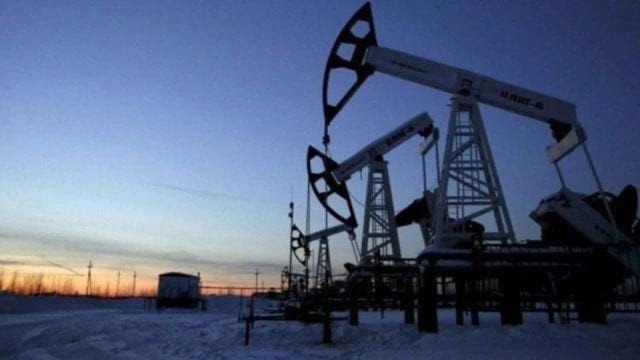
- 28 Jun 2025
In News:
In a stark contradiction to global climate goals, the world’s 65 largest banks increased their fossil fuel financing by $162 billion in 2024, reaching a total of $869 billion, up from $707 billion in 2023, according to the Fossil Fuel Finance Report 2025. This trend threatens to derail global commitments under the Paris Agreement and undermines the International Energy Agency’s (IEA) roadmap to achieving net-zero emissions by 2050.
India’s Position:
Among global lenders, the State Bank of India (SBI) was the only Indian bank featured in the top 65, rising from the 49th to 47th position. SBI’s fossil fuel financing increased modestly by $65 million, taking its 2024 total to $2.62 billion. Cumulatively, between 2021 and 2024, SBI extended $10.6 billion to fossil fuel projects. In contrast, JPMorgan Chase topped the global list with $53.5 billion in 2024 alone.
Despite this, SBI has also signalled intent to transition. It has pledged to become net zero by 2055, and aims to ensure that 7.5% of its domestic advances are green by 2030. As of March 2024, SBI had sanctioned ?20,558 crore in sustainable finance. However, this dual-track financing model raises questions about the coherence of India's green finance agenda.
Global Setbacks and Policy Rollbacks
2024 witnessed a rollback in climate-related financial commitments, particularly in the United States. The withdrawal of the US from the Paris Agreement, scheduled to take effect in 2026, was accompanied by policy shifts like exiting the Net Zero Banking Alliance and the Network for Greening the Financial System (NGFS). Major banks such as Wells Fargo abandoned their net-zero commitments, signaling a broader retreat from climate-aligned finance.
This global trend is no longer confined to North America. European banks, traditionally viewed as progressive, also weakened fossil fuel exclusion policies. The result: a global rise in fossil fuel merger and acquisition financing, which reached $82.9 billion in 2024, up by $19.2 billion from 2023. Although M&As do not directly add infrastructure, they consolidate fossil fuel power at a time when the world urgently needs to pivot to renewables.
Indian Banks and the Coal Dilemma
Indian financial institutions, barring a few exceptions like Federal Bank and RBL Bank, lack explicit coal exclusion policies. According to Climate Risk Horizons, this constitutes a major blind spot. The economics of energy is shifting — renewables and storage are now often cheaper than coal, making continued fossil fuel investments financially and environmentally risky.
Conclusion
The rise in fossil fuel financing reflects a disconnect between climate rhetoric and financial action, threatening the global transition to clean energy. For India, this highlights the need for a coherent climate finance strategy, integrating environmental, financial, and developmental priorities. As a signatory to the Paris Agreement and a G20 economy, India must not only align public finance with green goals but also push for global financial reforms that discourage fossil fuel dependencies and reward sustainable investments.
Rising Participation and Casualties of Women in Left-Wing Extremism
- 27 Jun 2025
Context:
There has been a sharp surge in the number of women Maoist cadres killed in anti-Naxal operations in Chhattisgarh since 2024. This rise has coincided with the intensification of counter-insurgency efforts under the Ministry of Home Affairs’ (MHA’s) renewed push to eliminate Left-Wing Extremism (LWE) by March 2026.
Behind these numbers lies a disturbing narrative of coercion, indoctrination, gender-based exploitation, and the systemic use of women and children as tools in extremist strategies.
Trends in Women Maoist Casualties (2024–2025)
- 2024: Out of 217 Maoists killed, 74 were women (~34%)
- 2025 (till June 20): Out of 195 killed, 82 were women (~42%)
- Comparison with previous years:
- 2019: 65 total killed | 17 women
- 2020: 40 total | 7 women
- 2021: 51 total | 13 women
- 2022: 30 total | 9 women
- 2023: 20 total | 5 women
This data indicates a doubling of women fatalities as a proportion of total casualties in Maoist operations since the launch of targeted operations.
Recruitment Through Coercion: Bal Dastas and Gendered Exploitation
According to the MHA, Maoists have been increasingly recruiting young Adivasi girls and forming “Bal Dastas” (child squads) in Chhattisgarh and Jharkhand. Key observations include:
- Parental coercion: Many impoverished tribal families are forced to give up their girl children under threats and pressure.
- Ideological indoctrination: Children are brainwashed to adopt Maoist ideology from an early age.
- Gendered exploitation: Although the Maoists outwardly reject patriarchy, the representation of women in leadership roles such as the Polit Bureau and Central Committee remains negligible.
- Use of women as foot soldiers and human shields, exposing them disproportionately to fatal encounters with security forces.
Underlying Issues: Security, Society, and Maoist Strategy
- Deliberate Alienation Strategy:
- Maoists systematically attack schools and educational infrastructure.
- As per MHA, education fosters critical thinking and alternate livelihoods, which are seen as a threat to Maoist influence.
- Civilian and Infrastructure Loss:
- Since 2019:
- 725 civilians killed in LWE violence.
- 263 incidents of attacks on economic infrastructure recorded.
- Since 2019:
- Socio-Economic Backdrop:
- Lack of education, healthcare, livelihood options, and state presence in remote tribal areas fuel Maoist recruitment.
- Women and children from these regions become the most vulnerable and easily exploited demographic.
Security Forces' Perspective and Response
- Initial recruitment of women was largely based on coercion and misinformation.
- Once inside the Maoist ranks, women face physical, mental, and emotional exploitation.
- Maoists use women primarily as human shields and expendable foot soldiers.
However, the security forces are increasingly pursuing a sensitive, gender-aware approach, prioritizing:
- Voluntary surrender schemes
- Gender-sensitive rehabilitation policies offering:
- Education
- Vocational training
- Healthcare access
- Social reintegration pathways
Way Forward: A Multi-Pronged Strategy
- Strengthen Surrender and Rehabilitation Frameworks:
- Expand socio-economic reintegration schemes tailored for women ex-cadres.
- Ensure psycho-social counselling, particularly for minors and survivors of exploitation.
- Enhance State Presence and Welfare Delivery:
- Accelerate development of infrastructure, education, and healthcare in LWE-affected districts.
- Promote community policing and tribal leadership in governance processes.
- Child Protection Measures:
- Strengthen child protection systems, including monitoring of Bal Dastas.
- Empower and engage Anganwadi workers, school teachers, and local NGOs in vulnerable zones.
- Gender-Sensitive Counter-Insurgency Doctrine:Train forces in humane engagement, protection of rights, and de-escalation tactics when dealing with women and child cadres.
India’s Quantum Leap in Secure Communication
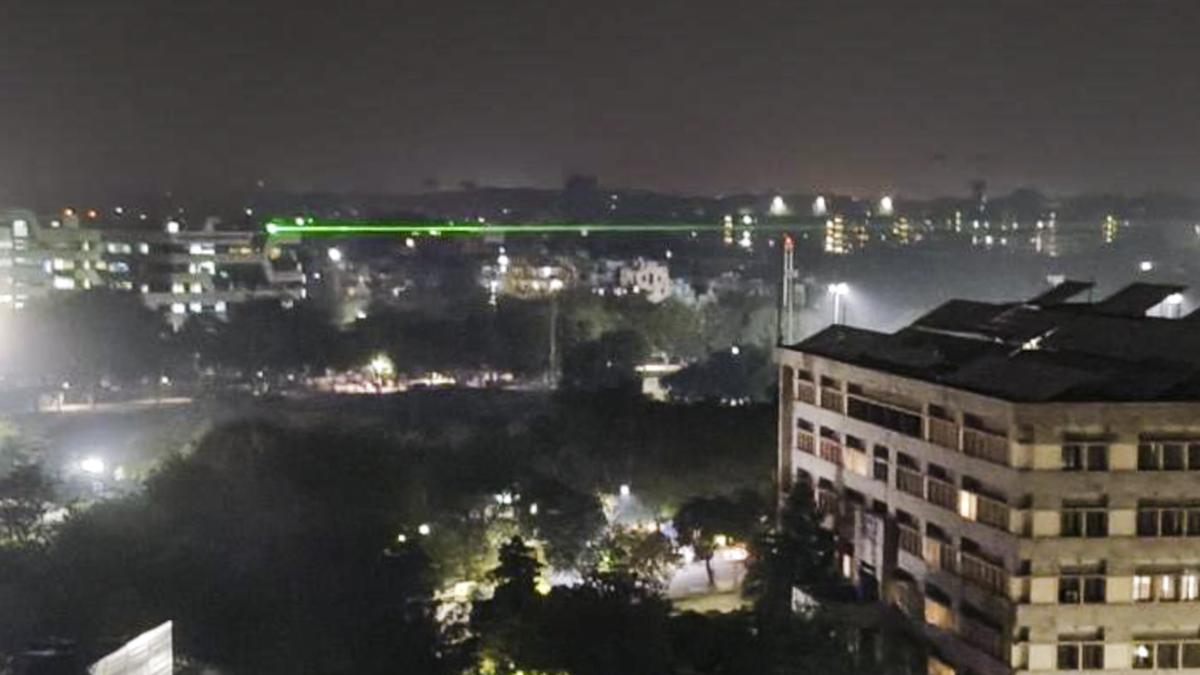
- 26 Jun 2025
In News:
Recently, India marked a major milestone in quantum technology with the successful demonstration of quantum secure communication over free space by IIT Delhi, in collaboration with the Defence Research and Development Organisation (DRDO). This achievement represents a significant step forward in India’s pursuit of quantum cybersecurity, quantum networks, and the future quantum internet, with vital applications in both defence and civilian domains.
What is Quantum Communication?
Quantum communication leverages principles of quantum mechanics, particularly quantum entanglement, to enable secure data transmission. In entanglement, the quantum state of two or more particles (usually photons) becomes correlated such that the measurement of one instantly determines the state of the other—regardless of the distance between them.
Security Advantage: Any attempt to intercept or measure the entangled photons disturbs their state, instantly revealing the breach. This makes quantum communication unbreakable by classical computational means.
Quantum Key Distribution (QKD): The Core Mechanism
Quantum communication is often employed for Quantum Key Distribution (QKD)—a method to securely generate and share encryption keys between two parties. Once both parties obtain identical secret keys via QKD, traditional algorithms (like AES) can be used to encrypt and decrypt actual messages.
There are two main types of QKD:
- Prepare-and-Measure QKD: Single photons are prepared in specific states and then measured.
- Entanglement-Based QKD: Pairs of entangled photons are distributed between users; any interception disturbs the entanglement, flagging the intrusion.
IIT-Delhi’s 2025 Breakthrough: Key Highlights
- Achievement: Demonstrated entanglement-assisted free-space QKD over a distance of more than 1 km at IIT Delhi campus.
- Secure Key Rate: ~240 bits per second.
- Quantum Bit Error Rate (QBER): <7%, which is acceptable under current protocols.
- Setting: Conducted under the DRDO-funded project “Design and development of photonic technologies for free space QKD”, in the presence of senior dignitaries from DRDO and IIT Delhi.
Free-space QKD offers a critical advantage—eliminating the need for laying optical fibres, making it viable in mountainous terrain and congested urban zones.
Previous Achievements by the IIT-Delhi & DRDO Team
- 2022: India’s first intercity quantum communication link established between Vindhyachal and Prayagraj using commercial dark optical fibre.
- 2023: Achieved QKD over 380 km using optical fibre with a QBER of 1.48%.
- 2024: Demonstrated entanglement-based QKD over 100 km using telecom-grade optical fibre.
Significance:
Strategic Applications:
- Defence Communication: Enables tamper-proof messaging and data sharing during operations.
- Cybersecurity: Shields critical infrastructure from quantum and AI-based cyber threats.
- Surveillance Immunity: Makes quantum networks resilient to conventional hacking or surveillance.
Civilian Applications:
- Banking and Finance: Secure real-time financial data transmission.
- Telecommunications: Enhances privacy in communication systems.
- Quantum Internet: Enables ultra-secure networking, distributed quantum computing, and time-synchronised communication.
Quantum Networks and the Road Ahead
India’s long-term goal is to establish a multi-node quantum network capable of secure long-range communication. This includes establishing:
- Satellite-to-ground QKD links, enabling nation-wide secure key distribution.
- Urban quantum networks, ensuring secure communication for government and military hubs.
India is drawing inspiration from China’s 4,600 km quantum network and U.S. plans for a quantum internet by the 2030s.
To this end, the National Quantum Mission (NQM) was approved in 2023, with an outlay of ?6,000 crore (2023–2031). It aims to:
- Develop 20–50 qubit quantum computers.
- Build quantum communication and sensing technologies.
- Establish four Thematic Hubs on quantum applications in computing, metrology, communication, and materials.
Institutional Mechanism: DIA-CoEs
The work was conducted under the DRDO-Industry-Academia Centre of Excellence (DIA-CoE) model. DIA-CoEs are collaborative platforms set up in premier academic institutions such as IITs and IISc, focused on developing cutting-edge defence technologies.
There are 15 DIA-CoEs currently operational across India.
Conclusion: India’s Quantum Communication Trajectory
India’s demonstration of free-space quantum secure communication marks a critical leap in strategic technology self-reliance. With continued support through the National Quantum Mission and institutional synergy between academia, industry, and the military, India is well-positioned to emerge as a global leader in quantum-enabled security infrastructure.
Reforming India’s Food and Fertiliser Subsidies
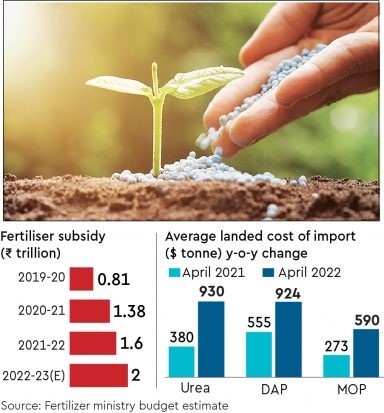
- 25 Jun 2025
In News:
India’s food and fertiliser subsidy regime has played a critical role in ensuring food security and supporting farm productivity. However, with extreme poverty declining from 27.1% in 2011 to a historic low of 5.3% in 2022, and the combined food and fertiliser subsidy bill exceeding ?3.5 lakh crore in FY26, there is a growing policy imperative to reimagine these subsidies for greater efficiency, fiscal prudence, and long-term sustainability.
The Current Landscape
Food and fertiliser subsidies in India are a mix of direct and indirect support mechanisms. Direct subsidies include schemes like PM-KISAN, while indirect subsidies include low-cost foodgrains under the National Food Security Act (NFSA) and price-controlled fertilisers. As per government data:
- Food subsidy is budgeted at ?2.03 lakh crore, reaching over 800 million beneficiaries through the Public Distribution System (PDS).
- Fertiliser subsidy is pegged at ?1.56 lakh crore, driven by rising global prices and a skewed demand for urea.
Challenges in the Current Subsidy System
- Mismatch Between Poverty and Coverage: Despite poverty falling to 5.3%, 84% of households still possess ration cards, many of whom are no longer poor. This reflects poor targeting and leads to welfare leakages.
- Nutritional Deficiency in PDS: The PDS remains cereal-centric, primarily distributing rice and wheat, while nutrition insecurity persists due to insufficient supply of pulses, edible oils, and micronutrients.
- Fertiliser Misuse: The overuse of nitrogen-based fertilisers (particularly urea) has caused an ecological imbalance, deteriorating soil health and reducing long-term farm productivity.
- Fiscal Constraints: Massive subsidy expenditures are crowding out investments in rural infrastructure such as irrigation, cold storage, and extension services—critical for doubling farmer incomes.
- Leakages and Ghost Beneficiaries: Despite digitisation and Aadhaar seeding, leakages continue in both PDS and fertiliser channels, with instances like card cancellations in Jharkhand pointing to persistent inefficiencies.
Government Initiatives So Far
- PMGKAY during COVID-19 extended free foodgrains to NFSA beneficiaries, and has now been merged with NFSA provisions.
- Digitisation of ration cards and Aadhaar-enabled ePoS machines are being used to plug PDS leakages.
- Neem-coated urea and the Nutrient-Based Subsidy (NBS) policy aim to reduce misuse and promote balanced fertilisation.
- Direct Benefit Transfer (DBT) for fertilisers is being piloted to streamline subsidy flows and reduce diversion.
Reform Measures Needed
- Targeting and Gradation: Use PM-KISAN, SECC, and Aadhaar-linked databases to better identify the poorest 15% households and gradually taper subsidies for others.
- Digital Food Coupons: Introduce ?700/month digital wallets or coupons for nutrient-rich food purchases (pulses, eggs, milk), improving dietary diversity and nutrition security.
- Fertiliser Coupons & Price Rationalisation: Introduce fertiliser coupons, deregulate prices, and incentivise eco-friendly inputs like bio-fertilisers and organic compost.
- Improve Monitoring: Strengthen data triangulation using land records, crop surveys, and income data to reduce inclusion/exclusion errors.
- Farmer Sensitisation: Communicate the rationale for reforms clearly to farmers to avoid mistrust or resistance, as witnessed during earlier protests.
Conclusion
India’s welfare architecture must evolve with its changing socio-economic landscape. With poverty rates at historic lows, continued universal subsidies are both fiscally unsustainable and inefficient. Smartly targeted reforms in food and fertiliser subsidies are vital for improving nutritional outcomes, restoring soil health, and ensuring optimal allocation of public resources. A calibrated transition to a more efficient, inclusive, and sustainable system will enhance welfare delivery without compromising economic growth.
Reshaping Energy and Geopolitics in West Asia

- 24 Jun 2025
In News:
The geopolitical landscape of West Asia is undergoing a profound transformation driven by escalating conflicts, realignments of power, and the increasing weaponisation of energy. The Israel-Iran conflict, rising threats to critical maritime routes, and the shifting allegiances of Gulf states are redefining the region’s strategic and energy equations, with direct implications for global stability and India’s national interests.
West Asia’s Centrality to Global Energy Security
- The Gulf region holds over 50% of global proven oil reserves, producing around 33% of the world’s oil and 17% of global natural gas.
- Despite a global shift to renewables, the world still consumes ~100 million barrels of oil daily, with ~50% used for transport and ~20% for petrochemicals.
- Natural gas accounts for 23% of global energy consumption, supplying a quarter of global electricity.
Geopolitical Flashpoints: Conflict and Energy Disruption
- Israel’s airstrikes on Iran’s nuclear facilities and Iran’s missile retaliation have heightened the risk of regional war.
- Iran may block the Strait of Hormuz, through which ~20% of global oil trade passes. Even the threat has increased insurance and freight rates.
- Charter costs for Very Large Crude Carriers (VLCCs) from the Gulf to China have risen from ~$20,000 to ~$48,000 per day.
- Iran’s oil exports (~2 million barrels/day) form ~2% of global oil supply, difficult to replace due to limited spare capacity among other producers.
- Threat of attacks on energy infrastructure by Iran-backed militias adds to regional instability.
Strategic Realignments in West Asia
- Gulf states (Saudi Arabia, UAE, Qatar) are moving toward multi-polar engagements, strengthening ties with China and Russia, and reducing dependence on the US.
- Historical precedent: The 1973 Arab oil embargo demonstrated the region's ability to influence global politics through oil.
- Arab monarchies’ reluctance to support Western-backed regime change in Iran stems from fears of regional destabilisation and domestic backlash.
- Public sentiment in Gulf nations remains strongly pro-Palestinian and anti-Western, adding internal pressures on ruling elites.
Weaponisation of Energy as a Strategic Tool
- The use of oil embargoes or supply disruptions is re-emerging as a geopolitical instrument.
- Iran could resort to asymmetric warfare or encourage proxy attacks on rival oil facilities, particularly in Iraq (which produces over 4 million barrels/day) and the Gulf.
Implications for India
Opportunities:
- Scope to diversify energy suppliers and enhance strategic petroleum reserves (SPR).
- India’s position in BRICS and SCO offers diplomatic space to act as a moderating influence.
Risks:
- 40–50% of India’s energy imports transit through the Strait of Hormuz—any disruption threatens energy security.
- Surging oil prices can fuel imported inflation, impacting transport, agriculture, and industrial costs.
- Indian projects like Chabahar Port, the International North-South Transport Corridor (INSTC), and the India-Middle East-Europe Corridor (IMEC) face operational uncertainties.
- Strain on India’s balanced ties with Israel and Iran, with diplomatic fallout possible.
- Gulf remittances (a vital source of foreign exchange) may decline if regional conflict escalates.
Conclusion
West Asia’s reconfiguration is a reminder of the enduring nexus between energy and geopolitics. For India, navigating this complex terrain requires strategic autonomy, energy diversification, and robust regional diplomacy. Balancing relations amid shifting alliances, while securing national interests in energy and trade, must remain central to India’s foreign policy calculus.
Panch Parivartan Strategy
- 23 Jun 2025
In News:
As India approaches its centenary of independence in 2047, the focus on reshaping its educational landscape has gained significant momentum. A noteworthy initiative in this direction is the Panch Parivartan Strategy launched by Vidya Bharati Akhil Bharatiya Shiksha Sansthan under its Vision 2047 roadmap. This five-pronged reform framework aims to redefine Indian education by integrating cultural values, social inclusivity, gender equity, environmental consciousness, and self-reliance.
What is the Panch Parivartan Strategy?
The strategy envisions a transformative shift in the Indian education system through five core components, collectively aimed at holistic nation-building. It seeks to develop not only knowledge and skills but also instill values rooted in India’s civilizational ethos.
1. Samajik Samrasata (Social Harmony)
This component focuses on inclusive education, bridging divides across caste, class, region, and religion. By ensuring that educational institutions become spaces of social integration, it promotes equality and mutual respect—core principles enshrined in the Constitution of India. This aligns with the larger vision of social justice and unity in diversity.
2. Kutumb Prabodhan (Family Value Integration)
Recognizing the family as the primary institution of socialization, this strategy integrates cultural practices such as Matri-Pitri Pujan (reverence for parents) and traditional joint family values into the educational process. The goal is to strengthen inter-generational bonds and instill respect for elders, thereby reinforcing India’s intangible cultural heritage.
3. Paryavaran Sanrakshan (Environmental Protection)
Environmental stewardship is another cornerstone of the strategy. Vidya Bharati has facilitated the planting of over 5.2 lakh saplings, developed 3,400 green campuses, and implemented water conservation practices in more than 1,800 schools. This aligns closely with the principles of sustainable development and promotes ecological consciousness among students, in line with India’s commitments under SDG-13 (Climate Action).
4. Swa (Self-Identity and Self-Reliance)
With a strong emphasis on vocational education, skilling, and rootedness, this pillar nurtures youth empowerment by offering training through ITIs, local crafts, and digital technologies even in remote areas like Kargil and Kiphire. It seeks to instill a sense of Bharatiyata (Indianness) while preparing students to be globally competent. This component supports the Atmanirbhar Bharat Abhiyan, aimed at creating a self-reliant India.
5. Nari Samman (Dignity of Women)
Focusing on girls’ education, leadership training, and self-defence programs, this strategy has already benefited over 14.4 lakh girls. By empowering women through education and capacity-building, it addresses gender disparities and aligns with SDG-5 (Gender Equality), promoting women as key agents of social transformation.
Significance for India@100
The Panch Parivartan Strategy serves as a unique model of value-based, inclusive, and sustainable education, blending modern learning tools (AI, robotics, coding) with India’s traditional wisdom (yoga, Sanskrit, dharmic values). It promotes an education model that is contextually Indian yet globally relevant, echoing the goals of the National Education Policy (NEP) 2020.
In a rapidly changing global order, this initiative represents a bottom-up approach to educational reform, fostering a generation of youth who are skilled, ethical, environmentally aware, and socially responsible—hallmarks of a Viksit Bharat (Developed India).
National Green Hydrogen Mission
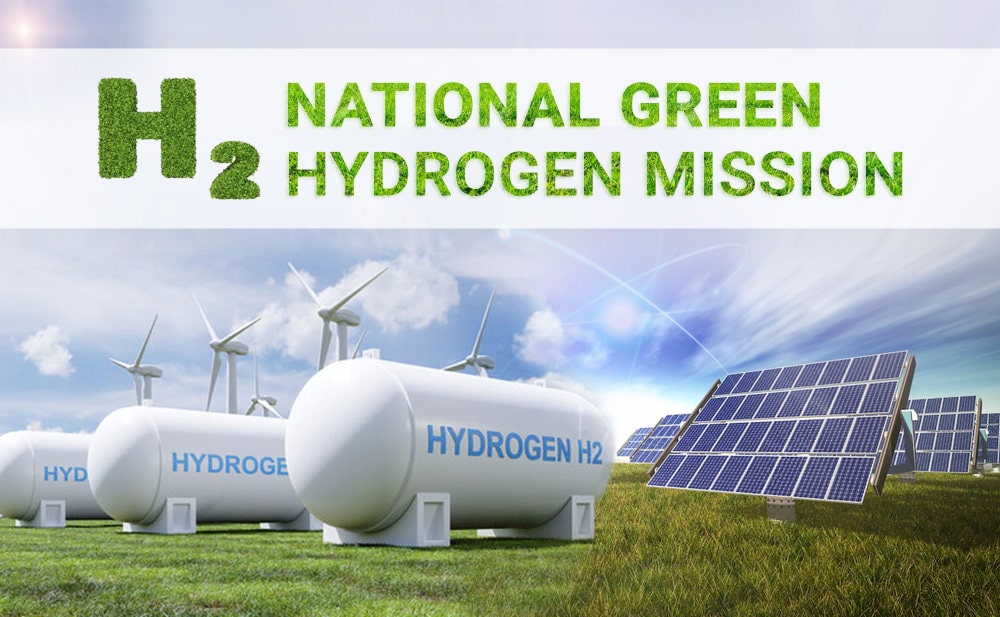
- 22 Jun 2025
In News:
India’s green hydrogen sector stands at a critical crossroads. Once buoyed by global enthusiasm for clean fuels, it now faces export-related headwinds due to geopolitical uncertainties and wavering international policy commitments. In response, India has strategically pivoted toward building a robust domestic ecosystem to ensure long-term energy security and decarbonisation.
National Green Hydrogen Mission
Launched in 2023, the National Green Hydrogen Mission aims to establish India as a global green hydrogen hub. With an outlay of ?19,744 crore, the mission targets the production of 5 million metric tonnes (MMT) of green hydrogen by 2030, along with domestic manufacturing of electrolysers under the SIGHT (Strategic Interventions for Green Hydrogen Transition) programme.
To ensure credibility and transparency, the Ministry of New and Renewable Energy (MNRE) introduced a measurement and certification framework in April 2025 to verify green hydrogen at the production stage. These foundational steps are essential for market integrity, both domestically and internationally.
Export Slowdown: Policy and Geopolitical Challenges
India’s early ambitions to become a major green hydrogen exporter have been hampered by global developments. Projects like ReNew’s green ammonia facility in Odisha face uncertain prospects due to declining international demand. Contributing factors include policy uncertainty in key markets like the United States, where a potential rollback of the Inflation Reduction Act (via the “Big Beautiful Bill”) threatens long-term clean energy investments.
Moreover, European procurement initiatives, such as Germany’s Hintco under the H2Global Foundation, have seen low industry response, reflecting weak investor confidence. In response, India has initiated talks with European ports like Rotterdam and Antwerp, and is pushing for FTA provisions to lower import duties on green hydrogen, aiming to keep future export channels open.
Domestic Market Creation:
Faced with uncertain exports, India is actively cultivating domestic demand. A recent tender for 8 lakh tonnes of green hydrogen received full bids, indicating growing interest from Indian firms. The Solar Energy Corporation of India (SECI) is managing another tender for 7 lakh tonnes, primarily for the fertiliser sector.
Pilot initiatives are also being deployed in sectors such as steel, shipping, and transportation. For example, hydrogen fuel cell buses are being tested in five cities, including Ladakh. Industry experts advocate for mandatory blending in sectors like fertilisers to accelerate adoption.
Cost Competitiveness: The Core Challenge
At present, green hydrogen costs $4–$5 per kg, significantly higher than $2.3–$2.5 per kg for grey hydrogen. A report by CII, Bain & Co., and RMI attributes this to immature supply chains, high capital costs, and limited scale. The report recommends pragmatic interventions such as:
- Blending green hydrogen into existing grey hydrogen or natural gas systems.
- Promoting uptake in niche sectors like ceramics and chemicals.
- Public procurement of green steel to create economies of scale.
Conclusion:
While India’s long-term vision to lead the green hydrogen transition remains intact, current challenges necessitate a strategic rebalancing. Prioritising domestic demand creation, infrastructure development, and cost reduction over near-term exports will be key. If implemented effectively, India may replicate its renewable energy success, positioning itself as a global leader in green hydrogen by the next decade.
The Rising Cost of Imports: A Concern for India's Food Security and Farmers
- 21 Jun 2025
In News:
India’s increasing dependence on imports of pulses and edible oils has raised serious concerns about agricultural sustainability, trade deficits, and farmer welfare. Despite policy claims of self-reliance in agriculture, recent trends highlight structural imbalances in domestic production and pricing mechanisms, especially for pulses and oilseeds.
Farmers at the Receiving End
Farmers cultivating pulses and oilseeds, such as moong, chana, masoor, and soyabean, are struggling due to poor price realization and lack of systematic procurement at Minimum Support Prices (MSP). Rao Gulab Singh Lodhi, a farmer from Madhya Pradesh, harvested 90 quintals of moong in summer 2025. Despite an MSP of ?8,682/quintal, he had to sell his produce in the open market at ?6,000/quintal due to the absence of procurement infrastructure. Soyabean prices, too, are well below MSP, selling at ?4,100–4,200/quintal against an MSP of ?5,328 (for 2025–26).
Unlike rice and wheat, for which procurement is extensive and assured, pulses and oilseeds lack institutional support, even in regions where agro-climatic conditions favour their cultivation. This discourages farmers from growing these critical crops, despite using high-yielding and climate-resilient varieties.
Pulses: From Self-Reliance to Import Surge
India witnessed a record 7.3 million tonnes (mt) of pulses imports worth $5.5 billion in 2024–25, surpassing the previous high of 6.6 mt in 2016–17. This comes after years of reduced imports, thanks to improved domestic production which had peaked at 27.3 mt in 2021–22.
However, the El Niño-induced drought in 2023–24 brought down production to 24.2 mt, leading to higher retail inflation in pulses and prompting duty cuts on imports. While these imports helped control prices—with CPI inflation in pulses falling to –8.2% by May 2025—they also depressed mandi prices. In Maharashtra, arhar and chana are currently trading below MSPs, impacting farmer incomes.
Major pulse imports in 2024–25 included:
- 2.2 mt of yellow/white peas (Canada, Russia),
- 1.6 mt of chana (Australia),
- 1.2 mt each of arhar and masoor (Africa, Canada, Australia),
- 0.8 mt of urad (Myanmar, Brazil).
Edible Oils: Worsening Import Dependency
India’s vegetable oil imports more than doubled in a decade—from 7.9 mt in 2013–14 to 16.4 mt in 2024–25. In value terms, imports jumped from $7.2 billion to $20.8 billion, driven partly by global supply disruptions (e.g., Russia-Ukraine war) and high domestic consumption.
India now imports over 60% of its edible oil needs, with palm (7.9 mt), soyabean (4.8 mt), and sunflower oil (3.5 mt) forming the bulk. In May 2025, CPI inflation for vegetable oils stood at 17.9%. In response, the Centre slashed import duties on crude palm, soyabean, and sunflower oil from 20% to 10%, reducing the overall tariff to 16.5%.
While the move may lower consumer prices, industry bodies like the Soyabean Processors Association of India have warned it will "flood the market with cheap imports", making domestic oilseed cultivation less viable. Farmers may shift to alternative crops in the coming kharif season, further weakening India’s self-sufficiency goals.
Conclusion
India’s growing import reliance for essential food commodities like pulses and edible oils, coupled with poor farm-level price realization and weak procurement systems, undermines the objectives of food security and self-reliance. Sustainable import substitution must be driven by robust domestic production incentives, fair pricing mechanisms, and resilient procurement frameworks—especially for non-cereal crops.
Why Governments Revise GDP Base Year and Why India’s 2026 Revision Matters
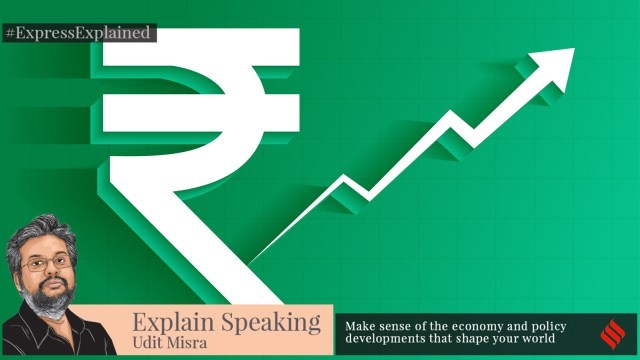
- 20 Jun 2025
Context:
The Gross Domestic Product (GDP) is the most critical metric used to measure the size and performance of a country’s economy. The "base year" is the reference year against which future GDP growth is calculated. India’s current GDP base year is 2011–12. The government, through the Ministry of Statistics and Programme Implementation (MoSPI), is now preparing to revise it to 2022–23, with the updated series to be released in February 2026.
Why GDP Base Years are Revised
Base year revisions are necessary to reflect structural changes in the economy, incorporate improved and updated data sources, and align with global statistical standards. GDP calculation, by its definition—the market value of all final goods and services produced in an economy—requires accurate, timely, and sectorally-relevant data. However, India’s economy evolves rapidly, particularly with the expansion of the services sector and changes in consumption, production, and labour patterns.
Past revisions (seven since 1948-49) reflect efforts to modernize methodology and include newer data sources, such as the shift from decennial Census-based workforce estimates to five-yearly Employment-Unemployment Surveys by the NSSO. This aligns with the National Statistical Commission’s recommendation of rebasing economic indices every five years.
The last revision occurred in 2015 (base year changed to 2011–12), following which methodological changes attracted controversy. Experts, including former Chief Economic Advisor Arvind Subramanian, argued that the revised methodology overestimated India’s GDP growth, especially in manufacturing, due to reliance on corporate database MCA-21 over the traditional Annual Survey of Industries.
Why the 2026 Revision Is Crucial
The 2026 revision comes after India missed a base year update in 2017–18 due to data-related concerns. Two key surveys—the Consumer Expenditure Survey (CES) and the Periodic Labour Force Survey (PLFS)—faced credibility and methodological challenges. The 2017-18 CES suggested rising poverty, while the PLFS showed a 45-year high in unemployment—trends contrary to government narratives. These issues led to scrapping the proposed 2017–18 base year.
Additionally, disruptive policy changes like demonetisation (2016) and the rollout of GST (2017), followed by the COVID-19 pandemic, meant the following years were not "normal" reference points. The 2022–23 base year is likely to mark the first post-pandemic stable year suitable for a revised series.
This revision is especially significant as India is poised to become the world’s third-largest economy by nominal GDP. At such a juncture, the quality, accuracy, and global credibility of GDP data will directly influence investor confidence, credit ratings, and policymaking.
The base year revision will also extend to other indicators: the Index of Industrial Production (IIP) will be revised to 2022–23, and the Consumer Price Index (CPI) to 2023–24. These changes ensure that inflation and industrial output metrics remain reflective of present-day consumption and production structures.
Conclusion
Revising the GDP base year is not merely a technical exercise—it is central to economic governance. The upcoming 2026 revision must restore faith in India's statistical systems, offer a transparent methodology, and align with international best practices. Its credibility will shape India’s economic narrative for the decade to come, both domestically and on the global stage.
India’s uneasy balancing act in the Bay of Bengal
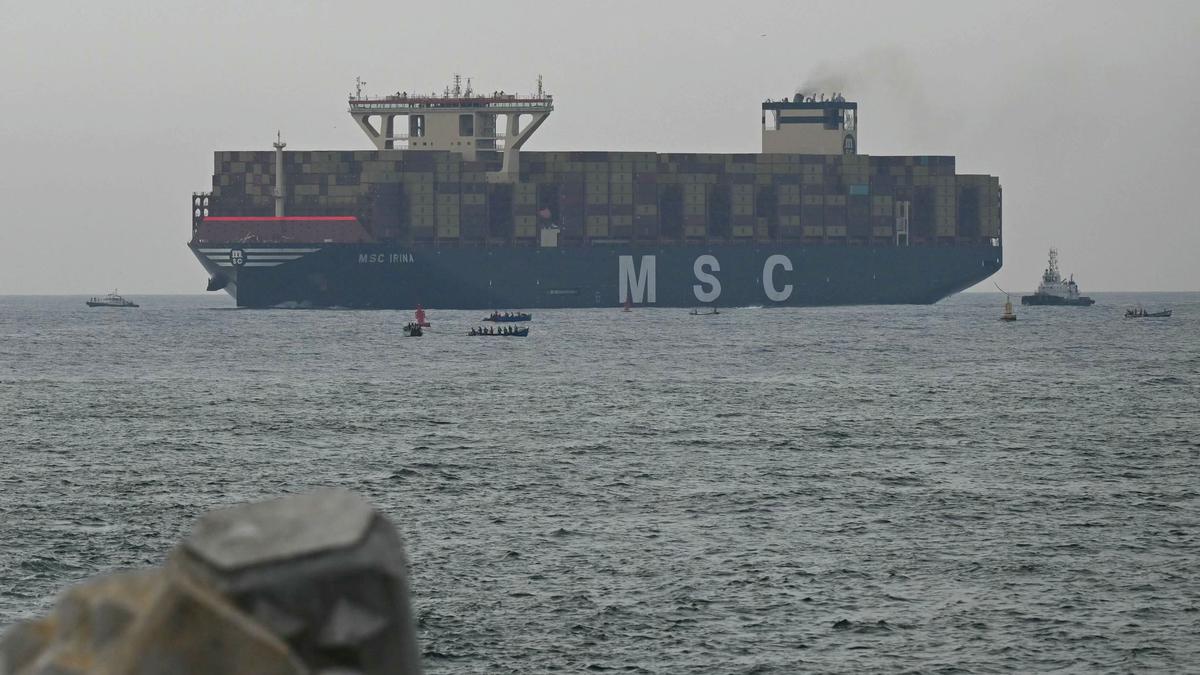
- 19 Jun 2025
In News:
India’s engagement in the Bay of Bengal is increasingly being shaped by the intersection of strategic priorities and economic imperatives. While New Delhi seeks to position itself as the regional integrator and promoter of cooperative regionalism, recent developments — particularly in relation to Bangladesh — underscore the challenges of maintaining this balance.
At the surface, India’s maritime and port infrastructure along the eastern seaboard has seen considerable progress. Cargo throughput at Visakhapatnam, Paradip, and Haldia has steadily risen. Initiatives like the Sagarmala Programme and coastal shipping incentives have doubled cargo movement on the east coast in the last decade. The signing of the BIMSTEC Maritime Transport Cooperation Agreement in early 2025 further aims to harmonise customs procedures and reduce port-related frictions.
Yet, India’s decision to withdraw the transshipment facility granted to Bangladesh in April 2025, which had enabled Dhaka to route exports through Indian ports to third-country destinations, sparked concern. While Indian officials cited logistical congestion, many in Bangladesh interpreted the move as politically motivated — possibly in response to Dhaka’s growing engagement with China and a speech by a Bangladeshi leader in Beijing framing India’s northeast as “landlocked” and dependent on Bangladesh.
This decision, followed by India’s restrictions in May 2025 on the import of seven Bangladeshi product categories via land ports, has fueled bilateral tensions. These developments have particularly impacted Bangladesh’s ready-made garment sector, which constitutes over 85% of its export earnings and had increasingly relied on Indian ports for efficiency. New routing requirements via Kolkata or Nhava Sheva have added delays and costs, weakening the trade facilitation narrative India has long championed.
While Bangladesh has asserted its regional role by diversifying trade partners — including reopening maritime trade with Pakistan — these are sovereign choices. India’s use of trade access as a signaling mechanism, if perceived as coercive, risks undermining the credibility of the neutral and rules-based regional architecture it seeks to build under BIMSTEC.
This is significant beyond bilateral ties. Regional actors like Myanmar, Sri Lanka, Bhutan, and Thailand observe India's actions closely. If India's trade facilitation appears contingent on political alignment, smaller states may opt to hedge or diversify partnerships, potentially weakening India’s centrality in the Bay of Bengal order.
India remains the region’s best-equipped actor in terms of port capacity, connectivity, and logistics infrastructure, giving it a leadership edge. However, credibility and consistency are equally vital. Without a clear separation between economic cooperation and strategic messaging, India’s regional ambitions risk being derailed.
To restore balance, India could consider reinstating the transshipment facility under a rules-based framework, ensuring transparency and predictability in trade logistics. This would reassure neighbours, revive trust, and reinforce India’s image as a stable anchor in a geopolitically dynamic region.
The Bay of Bengal is at a crossroads. It can evolve into a vibrant economic corridor between South and Southeast Asia, or descend into a fragmented arena of mistrust. India’s choices today will determine whether regional cooperation remains the cornerstone of its foreign policy — or becomes another casualty of strategic competition.
India’s Aviation Safety Oversight: Global Recognition Amid AI-171 Crash Investigation
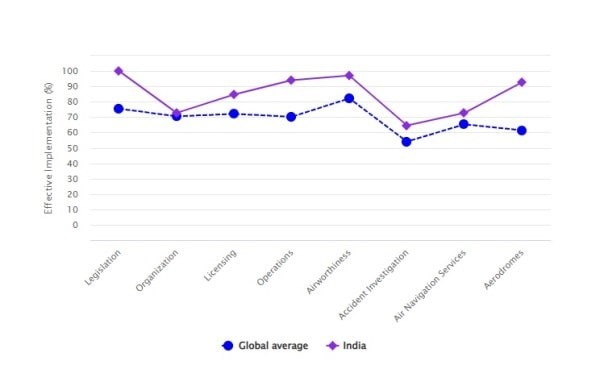
- 18 Jun 2025
In News:
The recent crash of Air India flight AI-171 in Ahmedabad, claiming 241 lives, marks the deadliest aviation accident in India in over a decade. As investigations proceed, the spotlight is on India’s aviation safety standards and regulatory preparedness, particularly the role of the Directorate General of Civil Aviation (DGCA) and India’s standing in global aviation safety audits.
India has received commendable recognition from two premier global aviation oversight bodies: the International Civil Aviation Organization (ICAO) and the US Federal Aviation Administration (FAA). These ratings assume greater relevance now, as the Aircraft Accident Investigation Bureau (AAIB) leads the probe into the Air India crash, in coordination with international stakeholders.
ICAO’s Positive Evaluation of India’s Aviation Oversight
In its 2022 audit under the Universal Safety Oversight Audit Programme (USOAP), the ICAO rated India’s overall Effective Implementation (EI) score at 85.65%, a sharp improvement from 69.95% in 2018. India outperformed the global average across all eight USOAP parameters—legislation, organisation, licensing, operations, airworthiness, accident investigation, air navigation services, and aerodromes.
In two critical areas, India scored remarkably high:
- Operations: India scored 94.02%, compared to the global average of 72.28%, and even surpassed the US (86.51%) and China (90%).
- Airworthiness: India achieved 97.06%, again ahead of the US (89.13%) and China (94.83%).
These ratings reflect significant reforms in civil aviation governance and oversight mechanisms. India’s regulatory capabilities are aligned with ICAO protocols, demonstrating strong institutional capacity to manage operational safety and technical compliance in aviation.
FAA's Endorsement: Retaining Category 1 Status
Further affirming India’s safety standards, the FAA retained India’s Category 1 status in April 2023 after a comprehensive audit in 2021 of DGCA’s oversight in aircraft operations, airworthiness, and personnel licensing. This classification means that India complies with international safety norms under the Chicago Convention and allows Indian carriers to expand operations to the US and enter into code-share agreements with American airlines.
The FAA acknowledged DGCA’s consistent improvement and commitment to safety, especially considering India’s rapid aviation growth—it is the world’s third-largest domestic aviation market and the fastest-growing among major economies.
Multinational Collaboration in Crash Investigation
In the wake of the AI-171 crash, a multi-agency probe has been launched. The AAIB, as per ICAO norms, is leading the investigation. The US National Transportation Safety Board (NTSB) and the UK’s Air Accidents Investigation Branch (AAIB-UK) are involved due to the aircraft’s American origin (Boeing), and the presence of British citizens onboard. Boeing and engine manufacturer GE will also assist in the investigation, adhering to ICAO’s investigation protocols.
Conclusion
India’s strong global safety ratings by ICAO and FAA underscore the DGCA’s enhanced regulatory performance and the country’s growing credibility in civil aviation safety. However, the tragic AI-171 crash serves as a reminder that even well-rated aviation systems must remain vigilant, responsive, and transparent—especially in post-crisis investigations.
Centre’s Push for Forest Rights Act Implementation
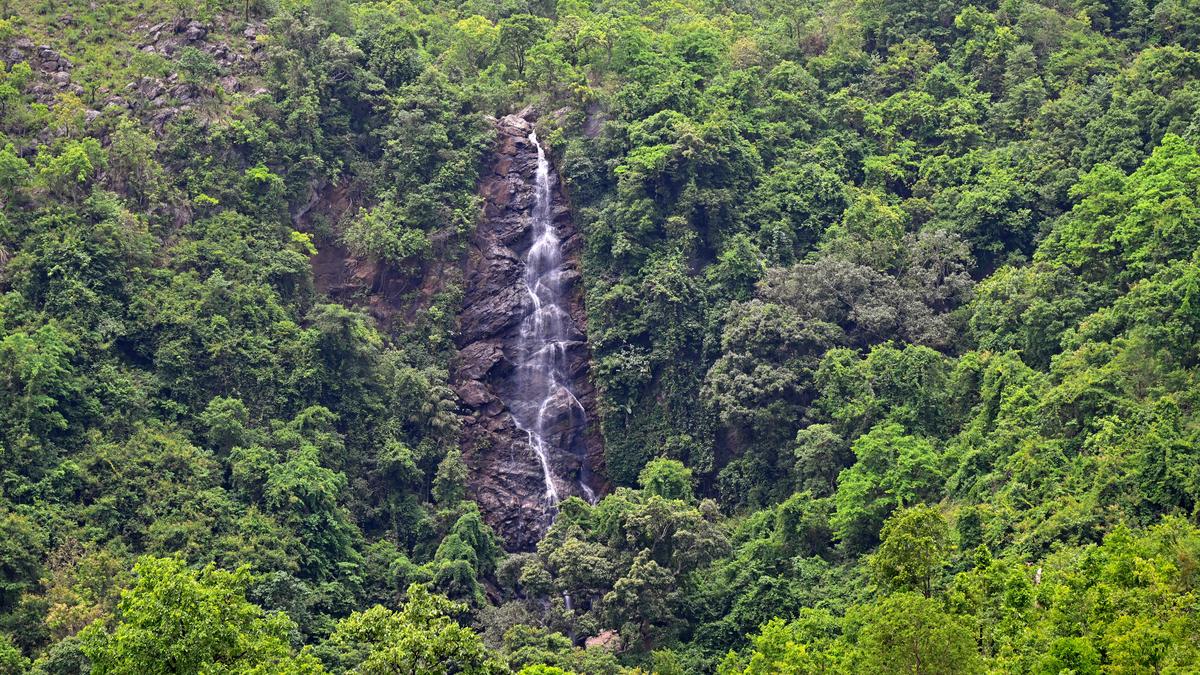
- 17 Jun 2025
In News:
The Forest Rights Act (FRA), 2006, was enacted to address the historical injustice faced by Scheduled Tribes (STs) and Other Traditional Forest Dwellers (OTFDs) by recognising their rights over forest land and resources. Its implementation, for nearly two decades, has been the sole responsibility of State governments. However, in a major policy shift, the Union government has begun funding support structures to aid its implementation through the Dharti Aaba Janjatiya Gram Utkarsh Abhiyaan (DAJGUA), launched in October 2024.
DAJGUA and Structural Support for FRA
For the first time, the Ministry of Tribal Affairs has sanctioned 324 district-level and 17 State-level Forest Rights Act (FRA) cells across 18 States and Union Territories. These cells aim to facilitate, not replace, the statutory process mandated under the FRA. The funding is routed through Grants-in-Aid General, with a budget allocation of ?8.67 lakh per district cell and ?25.85 lakh per State-level cell. Operational control rests with State Tribal Welfare Departments.
States like Madhya Pradesh (55 cells), Chhattisgarh (30), Telangana (29), Maharashtra (26), Assam (25), and Jharkhand (24) have received the highest number of sanctioned FRA cells. Notably, while Madhya Pradesh and Chhattisgarh report low pendency, States like Assam and Telangana have pending claim rates exceeding 60% and 50% respectively.
Mandate and Function of FRA Cells
These FRA cells are designed to support claimants and Gram Sabhas in the technical and administrative aspects of filing claims. Their responsibilities include:
- Preparing documentation and gathering supporting evidence;
- Assisting in Gram Sabha resolutions;
- Digitising land records and maintaining claim status;
- Facilitating the conversion of forest habitations into revenue villages;
- Supporting demarcation and record updates.
Importantly, these cells are not empowered to influence the decisions of statutory committees such as Forest Rights Committees (FRCs), Sub-Divisional Level Committees (SDLCs), or District Level Committees (DLCs), which are central to the FRA’s decentralised decision-making framework.
Concerns of a Parallel Mechanism
Despite their limited mandate, forest rights activists and experts express concerns that these cells may create a parallel mechanism outside the FRA’s statutory framework. Critics argue that the responsibilities assigned to the FRA cells—documentation, verification, facilitation—already fall under the statutory roles of the FRCs and other committees. This overlap risks creating confusion at the grassroots level and may dilute the authority of legally mandated bodies.
Furthermore, structural challenges—such as infrequent SDLC/DLC meetings and delays by Forest Departments even after DLC approval—are cited as key reasons for pending claims, which currently stand at 14.45% of the total 51.11 lakh claims filed across 21 States/UTs. Over 42% of the 43 lakh claims disposed of have been rejected, highlighting systemic inefficiencies.
A Cautious Step Forward
While DAJGUA represents a broader tribal welfare initiative involving 25 schemes across 17 ministries, the FRA facilitation component must tread carefully to respect the legal sanctity of the FRA. If implemented transparently and collaboratively, the FRA cells can bridge capacity gaps and support timely disposal of claims.
However, the success of this intervention hinges on maintaining the balance between administrative innovation and legal integrity—ensuring that support structures complement, rather than compete with, the FRA’s decentralised governance.
Israel–Iran Strike 2025
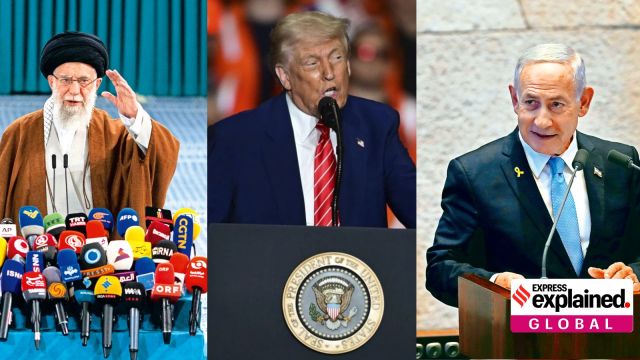
- 15 Jun 2025
In News:
On June 13, 2025, Israel launched a large-scale military strike on Iran, targeting nuclear and military sites in Tehran. The attack resulted in the deaths of Iran’s Revolutionary Guard chief and two top nuclear scientists, marking a sharp escalation in the long-running shadow conflict between Israel and Iran.
Backdrop: Iran’s Nuclear Programme and Global Concerns
Iran claims its nuclear programme is peaceful, aimed at energy production and medical research. However, international skepticism remains high. The International Atomic Energy Agency (IAEA) recently declared Iran in breach of its non-proliferation obligations for the first time in two decades, citing a lack of transparency, failure to account for undeclared nuclear material, and enrichment of uranium up to 60% purity, dangerously close to weapons-grade (90%). According to reports, Iran possesses enough stockpiled uranium to build up to nine nuclear weapons, raising alarm globally.
Israel’s Strategic Calculus and the Execution of the Strike
Israel has long opposed Iran’s nuclear ambitions and the 2015 nuclear deal (JCPOA). The June 2025 assault was the culmination of years of covert operations, including the 2020 assassination of Mohsen Fakhrizadeh and earlier strikes on Iran-linked targets. The latest strike, targeting nuclear and missile facilities as well as residences of top scientists and generals, is seen as the most severe blow to Iran since the 1979 revolution.
The collapse of Iran’s regional deterrence network—its so-called “axis of resistance”—following the fall of Syrian President Bashar al-Assad in December 2024 played a critical role. With Syria no longer serving as a strategic corridor between Tehran and Hezbollah, Israel perceived an opportune moment to act.
US Foreign Policy Shift and Trump’s Role
The re-election of President Donald Trump in 2024 introduced a more confrontational posture toward Iran. Although the U.S. initially delayed the planned May strike to explore diplomacy, the failure of talks led to U.S. backing for the June operation, using military pressure as leverage for a new nuclear deal demanding Iran's full disarmament.
Regional Fallout and Global Economic Implications
The strike triggered an immediate 8% rise in global oil prices, exposing energy vulnerabilities across oil-importing nations. Particularly affected is India, which imports over 80% of its crude oil. Though India imports little directly from Iran, it depends heavily on Gulf producers like Iraq, Saudi Arabia, and the UAE, whose exports transit through the Strait of Hormuz—a vital chokepoint now under threat.
Further, disruptions in Red Sea and Suez Canal shipping routes may force Indian exporters to reroute via the Cape of Good Hope, increasing transit times by 15–20 days and pushing shipping costs up by 40–50%.
Market Response and Strategic Concerns
While oil prices are expected to stabilise due to global reserves and supply diversification, gold prices surged above ?1 lakh per 10g as investors moved to safer assets. The broader geopolitical uncertainty may stoke inflationary pressures, affecting global and Indian economic stability.
Conclusion
The Israel–Iran conflict, while regionally contained for now, holds serious global implications—challenging non-proliferation efforts, disrupting energy security, and threatening global economic stability. For India, the crisis underscores the need for diversified energy sourcing, geopolitical agility, and resilient export infrastructure to mitigate such strategic shocks.
Iran’s Non-Compliance with IAEA Safeguards

- 16 Jun 2025
In News:
In a pivotal move, the International Atomic Energy Agency (IAEA) Board of Governors, recently passed a resolution declaring Iran in breach of its 1974 Comprehensive Safeguards Agreement. This marks the first formal non-compliance declaration since 2006 and signals a possible escalation of Iran’s nuclear issue to the United Nations Security Council (UNSC). The resolution was passed with 19 votes in favour, 3 against (China, Russia, Venezuela), and 11 abstentions.
What led to the resolution?
The IAEA expressed grave concern over Iran’s failure to explain uranium traces found at three undeclared sites—Lavisan-Shian, Varamin, and Turquzabad. These sites, suspected to be part of an undeclared nuclear program until the early 2000s, reflect Iran’s longstanding reluctance to grant the IAEA full access and credible information.
The IAEA resolution cited Iran’s “many failures” since 2019 to provide timely cooperation. This includes Iran’s inability to account for undeclared nuclear material and activities, in violation of its obligations under the Non-Proliferation Treaty (NPT) and its 1974 Safeguards Agreement.
IAEA Safeguards and Article XII.C
Under the 1974 Safeguards Agreement, Iran is legally required to:
- Declare all nuclear materials and maintain detailed inventories.
- Notify the IAEA about any new nuclear facilities.
- Allow routine and special inspections and surveillance.
The IAEA’s inability to verify the absence of nuclear material diversion for weaponisation constitutes a major safeguard failure.
The resolution was passed under Article XII.C of the IAEA Statute, which grants the Board powers to:
- Demand corrective actions.
- Suspend technical assistance.
- Notify all member states.
- Refer the case to the UNSC.
This rare Article has only been invoked six times before—against Iraq, North Korea, Iran (2006), Libya, Romania, and Syria.
Iran’s Response and Regional Tensions
Iran denounced the resolution as “political” and retaliated by:
- Announcing plans for a new underground uranium enrichment facility.
- Upgrading centrifuges at Fordow.
- Placing air defence systems on alert.
- Threatening “proportional measures” in response to Israeli and Western pressure.
A day after the IAEA resolution, Israel launched preliminary airstrikes on Iranian nuclear sites and declared a state of emergency. Iran reportedly mobilised drones in response, escalating military tensions in the region.
Broader Geopolitical Implications
This development coincides with the October 2025 deadline for the expiration of U.N. sanctions relief under the 2015 Iran Nuclear Deal (JCPOA). The U.S., which exited the JCPOA in 2018, has signaled support for “special inspections” of Iranian sites. Meanwhile, back-channel talks in Oman remain stalled, and the threat of sanctions “snapback” looms large.
The IAEA also maintains $1.5 million worth of peaceful nuclear projects in Iran, including in radiopharmaceuticals and desalination—now potentially at risk.
What lies ahead?
Iran now has a limited window to respond. If it fails to provide adequate clarifications, the Board may escalate the issue to the UNSC, which could result in renewed sanctions or binding resolutions. A follow-up Board meeting and vote is expected in September 2025.
Conclusion
The IAEA’s resolution represents a critical juncture in global non-proliferation diplomacy. It underscores the challenges of verification in the absence of cooperation and the rising tensions in the Middle East nuclear landscape. For India and the world, this raises important questions on nuclear governance, energy diplomacy, and regional stability.
Childhood Obesity in India: A Growing Public Health Challenge

- 14 Jun 2025
Introduction
Childhood obesity has emerged as a serious public health concern in India, mirroring global trends. A recent study places India among the top countries grappling with rising obesity among children. This phenomenon, once limited to affluent sections, is now widespread across urban and semi-urban regions, driven by a complex interplay of dietary, behavioural, genetic, and socio-economic factors.
Understanding the Causes
- Dietary Shifts and Unhealthy Eating Habits: The increasing consumption of calorie-dense, ultra-processed foods, sugary beverages, and fast food is one of the primary contributors to childhood obesity. Traditional, balanced home-cooked meals are being replaced due to changing family dynamics and time constraints, leading to poor nutritional choices among children.
- Sedentary Lifestyle and Screen Time: The decline in physical activity among children is alarming. Excessive screen exposure through television, mobile phones, and video games, coupled with a lack of safe outdoor spaces and diminishing emphasis on physical education in schools, has led to a largely sedentary routine among adolescents.
- Genetic and Medical Predispositions: Genetic predisposition plays a significant role. Children with a family history of obesity are more susceptible. Medical conditions like hypothyroidism and insulin resistance further increase vulnerability.
Consequences of Childhood Obesity
- Physical Health Risks: Obese children are at an elevated risk of early-onset non-communicable diseases (NCDs) such as Type 2 diabetes, cardiovascular ailments, hypertension, and musculoskeletal disorders. They may also experience early puberty and related hormonal imbalances.
- Psychosocial Impact: Beyond physical health, obesity in children is linked to psychological distress. Affected children often face bullying, social exclusion, low self-esteem, and are more prone to depression and anxiety. These challenges can persist into adulthood, impacting mental well-being and social functioning.
Preventive Strategies: The Role of Family, Schools, and Policy
- Parental Involvement and Home Environment
- Promoting home-cooked nutritious meals over packaged or junk food.
- Integrating physical activities like walking, yoga, or family sports into daily routines.
- Educating children on food labels, nutrition, and healthy choices.
- Involving children in meal preparation and encouraging mindful eating practices.
- School-based Interventions
- Making physical education compulsory and structured in the school curriculum.
- Conducting regular health screenings and awareness campaigns.
- Promoting healthy food environments in school canteens and classrooms.
- Organizing workshops on nutrition, mental health, and lifestyle habits.
- Health Monitoring and Medical Intervention
- Periodic health check-ups to identify early signs of obesity and related conditions.
- Early medical and nutritional interventions to prevent progression to severe obesity or associated NCDs.
Policy Imperatives and Way Forward
Given its long-term implications on public health and healthcare burden, childhood obesity must be addressed through a multi-sectoral approach involving:
- Policy frameworks that regulate food marketing targeted at children, particularly unhealthy snacks and beverages.
- Urban planning that ensures safe public spaces for physical activity and sports infrastructure in schools.
- Integration with national health programmes like the Rashtriya Bal Swasthya Karyakram (RBSK) and POSHAN Abhiyan to monitor and support child nutrition holistically.
- Mass awareness campaigns to de-stigmatize obesity and promote healthy behaviours.
Conclusion
Childhood obesity is no longer a concern confined to individuals—it is a looming public health challenge with intergenerational consequences. If not addressed early, it risks leading to a population burdened by NCDs and compromised productivity. Collaborative action by parents, educational institutions, healthcare providers, and government agencies is critical to reversing this trend and ensuring a healthier future for India’s children.
Mental Healthcare in India

- 13 Jun 2025
Introduction
Mental health has long been neglected in mainstream healthcare discourse. However, recent developments, especially in the post-pandemic era, have sparked a paradigm shift in both public perception and policy priorities. With the Mental Healthcare Act, 2017 and subsequent directives from the Insurance Regulatory and Development Authority of India (IRDAI), mental health is now legally and practically on par with physical health in India’s insurance ecosystem.
Global and National Context
- According to the World Health Organization (WHO), mental health conditions affect 1 in 5 adults globally, resulting in over $1 trillion in productivity loss annually.
- In India, increased awareness and policy changes have led to mental health coverage being integrated into mainstream health insurance.
Policy Milestones and Insurance Evolution
- Mental Healthcare Act, 2017: A landmark legislation mandating equal treatment of mental and physical illnesses.
- IRDAI Directives: Instructed insurers to include mental illness in their policy coverage.
- Health Insurance Trends:
- Mental health–related claims (for therapy, stress, anxiety medication) have risen by 30–50% over the past 2–3 years.
- Outpatient Department (OPD) benefits now cover therapy, counselling, and psychiatric consultations.
Demographic and Behavioural Trends
1. Young Adults (25–35 years)
- Major drivers of insurance adoption for mental health.
- Key stressors include work-life imbalance, digital overload, and financial pressures.
- Show preference for app-based therapy and digital mental health platforms.
2. Women
- Higher uptake of mental health-inclusive policies.
- Insurance aligned with life-stage challenges (e.g., pregnancy, menopause, caregiving).
- Reflects increased cultural recognition of women’s emotional well-being needs.
3. Urban-Rural Divide
- Tier-1 cities account for over 50% of mental health insurance uptake.
- Better therapy networks, progressive employers, and higher digital literacy.
- Tier-2 cities showing promising growth in awareness and access.
Workplace Shifts
- Growing emphasis on mental wellness programs.
- Initiatives include:
- Stress management workshops
- In-house counsellor access
- Flexible work arrangements
- Indicates an evolving perception of mental health as integral to employee well-being.
Challenges Ahead
- Despite broader coverage, utilisation remains low due to:
- Lack of awareness about existing benefits (e.g., OPD coverage, cashless therapy).
- Social stigma and low mental health literacy.
- Accessibility gaps in rural and semi-urban areas.
Way Forward
- Awareness Campaigns: Promote knowledge of insurance entitlements and available services.
- Capacity Building: Increase mental health professionals and digital outreach platforms.
- School and Workplace Integration: Embed emotional literacy and psychological support in institutions.
- Insurance Product Innovation: Develop simplified, accessible plans tailored to diverse demographic needs.
- Data Collection and Monitoring: Use claim trends to shape targeted mental health interventions.
Conclusion
Mental healthcare in India is at a pivotal moment. The convergence of legal reform, insurance innovation, and shifting public attitudes is laying the foundation for a more inclusive and responsive mental health system. However, inclusion on paper must translate to accessibility in practice. Bridging this gap requires sustained efforts in awareness, education, and empathetic policy implementation.
Mental health is no longer an afterthought — it is an essential pillar of human well-being and economic productivity.
India’s Growing Gig Economy
- 12 Jun 2025
In News:
India’s gig and platform economy is undergoing a significant transformation, driven by digital technologies, evolving labour market dynamics, and an increasing preference for flexible work arrangements. According to a recent study by the VV Giri National Labour Institute (VVGNLI), affiliated with the Ministry of Labour and Employment, India’s gig workforce is projected to grow to 62 million by 2047, accounting for 15% of the total non-agricultural workforce.
This forecast builds on estimates from the 2022 NITI Aayog report, which pegged the number of gig workers at 3 million in 2020, employed across 11 major platform companies. This figure is expected to rise to 23 million by 2030 (7% of the non-farm workforce). Under optimistic scenarios, gig employment could expand to 90.8 million, though external shocks like policy shifts or technological disruptions may cap growth at 32.5 million.
The gig economy in India initially found its foothold in ride-sharing and food delivery services. Over time, it has diversified into sectors such as healthcare, education, digital content creation, and professional consulting, indicating its expanding relevance in the overall employment landscape.
Despite this rapid growth, gig workers face significant structural challenges. These include the lack of social security, unregulated working hours, occupational stress, and the absence of effective grievance redressal mechanisms. Many gig workers are also vulnerable to retaliatory practices, such as app-based ID deactivation, for voicing concerns against unfair algorithms or wage-related issues.
One of the most pressing issues highlighted by the study is the ambiguous classification of gig workers. While countries such as the UK, Canada, Spain, France, and Denmark have legally recognised gig workers and provided appropriate labour protections, India continues to grapple with defining the boundary between employees and independent contractors. This ambiguity deprives workers of legal safeguards, especially those working full-time on digital platforms.
The VVGNLI study calls for urgent regulatory interventions. These include:
- Legal recognition of gig workers and their right to unionize and collectively bargain.
- Algorithmic accountability, to ensure transparency in task allocation and wage determination.
- Minimum income guarantees, regulated working hours, and integration of occupational health and safety standards.
- Establishing a National Registry for Platform and Gig Workers, managed jointly by central and state governments, to facilitate social security coverage.
Additionally, the Code on Social Security, 2020, provides a legislative foundation to extend health insurance, accident coverage, and retirement benefits to gig and platform workers. It proposes a social security fund, with contributions from aggregators, to support these provisions.
To ensure long-term sustainability, the government must also invest in skill development and upskilling initiatives, particularly in digital literacy, entrepreneurship, and emerging trades, to improve employability and economic resilience among gig workers.
In conclusion, India’s gig economy holds the potential to redefine employment patterns and contribute substantially to inclusive economic growth. However, this potential can only be fully realised through a rights-based, inclusive, and regulation-driven framework that balances innovation with worker welfare.
U.K.–EU Reset: A Strategic Gateway for India
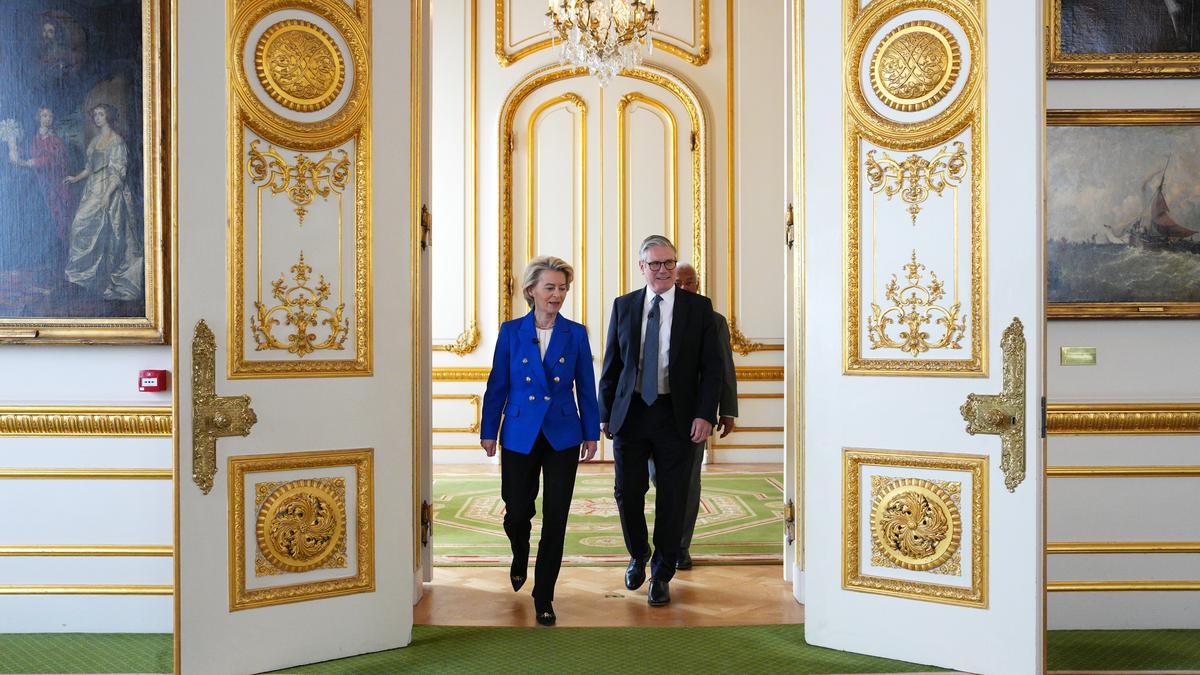
- 11 Jun 2025
In News:
The recent diplomatic overture by the United Kingdom under Prime Minister Keir Starmer to reset relations with the European Union (EU) marks a pivotal moment in Euro-Atlantic cooperation. Though the development appears Eurocentric, its implications for India are profound — ranging from trade facilitation and foreign policy realignment to diaspora and talent mobility. For India, this evolving Western convergence offers a unique opportunity to recalibrate its economic and strategic engagements.
Redefining India’s Trade Corridors
The renewed UK-EU cooperation — covering food safety, fisheries, customs, and border controls — has the potential to ease operational frictions for Indian exporters that emerged post-Brexit.
- Current Trade Landscape: In FY2024, India’s exports to the EU stood at $86 billion, and to the U.K. at $12 billion, reflecting the strategic importance of these partners.
- Post-Brexit Challenges: Indian businesses, especially in pharmaceuticals, textiles, and agri-products, faced dual regulatory requirements.
- Reset Opportunities: A harmonised regulatory framework can reduce compliance redundancies and lower costs. India, which meets over 25% of the U.K.’s pharmaceutical demand, could benefit from unified drug approvals.
- Sectoral Impact:
- Indian seafood exports (worth approx. $7.38 billion) could see improved access if sanitary and phytosanitary norms are streamlined.
- However, SMEs may face challenges in adapting to tighter European standards.
Policy Recommendation: India must bolster its export competitiveness through schemes like RoDTEP, PLI, and enhanced certification infrastructure to meet higher technical standards.
Deepening Strategic and Diplomatic Ties
A more aligned U.K.-EU foreign and defence policy creates new avenues for India to build deeper multilateral and trilateral engagements.
- Existing Frameworks:
- India–EU: Strategic Partnership Roadmap to 2025
- India–U.K.: Comprehensive Strategic Partnership (2022), covering cybersecurity, climate, and maritime security
- Potential Synergies:
- Enhanced coordination in forums like the UN, G-20, and WTO
- Scope for defence collaboration in the Indo-Pacific through joint naval exercises, technology transfers, and intelligence sharing
India’s partnerships with France, Germany, and the U.K. already focus on defence modernisation and green technologies. A coordinated U.K.–EU posture could formalise India’s role in shaping Western responses to strategic challenges in Asia, especially China’s assertiveness.
Global South Leadership: India can also leverage this alignment to push for climate finance, digital public infrastructure, and multilateral reform, reinforcing its leadership role post-G20 2023.
Reimagining Talent Mobility and Diaspora Engagement
India possesses the world’s largest diaspora, with significant populations in the U.K. and EU.
- Mobility Trends:
- In 2024, the U.K. issued over 1,10,000 student visas to Indian nationals.
- Post-Brexit, mobility of Indian professionals to the EU was curtailed.
- Potential Reset:
- Renewed U.K.–EU coordination on border and migration policy may enable partial mobility reintegration.
- India’s migration pacts with France, Germany, and Portugal could benefit from a wider U.K.–EU framework.
This realignment could lay the groundwork for a semi-integrated talent corridor, enhancing the movement of students, skilled professionals, and researchers.
Conclusion: Strategic Imperatives for India
The U.K.–EU reset is more than a European internal realignment — it is a geostrategic moment that India must strategically exploit. Whether through trade harmonisation, defence diplomacy, or diaspora engagement, India stands to gain significantly. However, to capitalise on this, India must:
- Accelerate trade facilitation and infrastructure modernisation
- Strengthen its regulatory frameworks
- Enhance institutional diplomatic coordination
- Assertively position itself in multilateral platforms
This convergence of economic and diplomatic opportunity presents India with a chance to reshape its place in the evolving global order.
Scaling India's Apparel Sector for Export Growth

- 10 Jun 2025
In News:
India’s textiles and apparel (T&A) sector is one of its oldest and most employment-intensive industries, contributing 2.3% to GDP and employing over 45 million people, making it the second-largest employer after agriculture. Despite this, India’s share in global apparel trade has remained stagnant at around 3% for two decades—far below its potential. With global apparel trade at $529.3 billion, India’s contribution stands at just $15.7 billion, and the ambitious target of $40 billion in exports by 2030 remains distant unless bold structural reforms are initiated.
Structural Challenges
The fragmentation of the industry is a major bottleneck. Over 80% of apparel units are MSMEs, operating with limited scale, informal labour, and poor integration. In contrast, countries like China, Vietnam, and Bangladesh have achieved scale by setting up large, export-oriented factories or coordinated "buying houses" to pool capacity.
India’s cost of capital (≈9%) also hampers competitiveness, compared to 3–4.5% in China and Vietnam. Further, rigid labour laws, such as mandatory 2x overtime pay, discourage formal employment. Supply chains are dispersed, increasing delivery timelines and logistics costs. These issues are compounded by low female labour force participation, despite women comprising 70% of the workforce in leading apparel hubs.
Success Story: Shahi Exports
The example of Shahi Exports illustrates what is achievable with scale, professionalism, and inclusive practices. From a 15-member unit in 1974, it has evolved into India’s largest apparel exporter, employing over 100,000 workers (70% women) across 50+ factories in 8 states, with over $1 billion in revenue. It shows that Indian firms can scale and compete globally, but organic growth alone is too slow to meet national export goals.
Policy Reforms: A Way Forward
To unlock the sector’s full potential, transformative policy measures are required:
- Capital Access for Scale: A 25–30% capital subsidy and a 5–7 year tax holiday for units with 1,000+ machines would help achieve viable scale. Linking incentives to size, as proposed under PLI 2.0, is essential.
- Flexible Labour Norms: Labour reforms, such as rationalising overtime pay to 1.25x (ILO standard), and easing compliance can encourage formal hiring. Linking MGNREGA funds (25–30%) to wage subsidies in garment units can promote productive, formal employment.
- Skilling for Demand: Schemes like SAMARTH should be expanded for short-cycle, demand-driven training, especially for women and youth, to bridge the skills gap in the sector.
- Cluster-Based Development: At least two PM MITRA Parks should be designated as garment hubs in labour-abundant, low-cost states like Uttar Pradesh and Madhya Pradesh to reduce migration, cut costs, and promote inclusive industrialisation.
- Export-Linked Incentives (ELI): Shift from production-linked to export-linked schemes that reward global competitiveness, not just output.
Conclusion
The apparel sector offers a rare opportunity to generate mass employment, promote inclusive growth, and boost exports. But without scale, reforms, and a strategic policy shift, the $40 billion export dream will remain elusive. India must act swiftly to replicate success stories like Shahi Exports, not over decades, but within years. The time for bold policy innovation is now.
Reforming Research Procurement in India
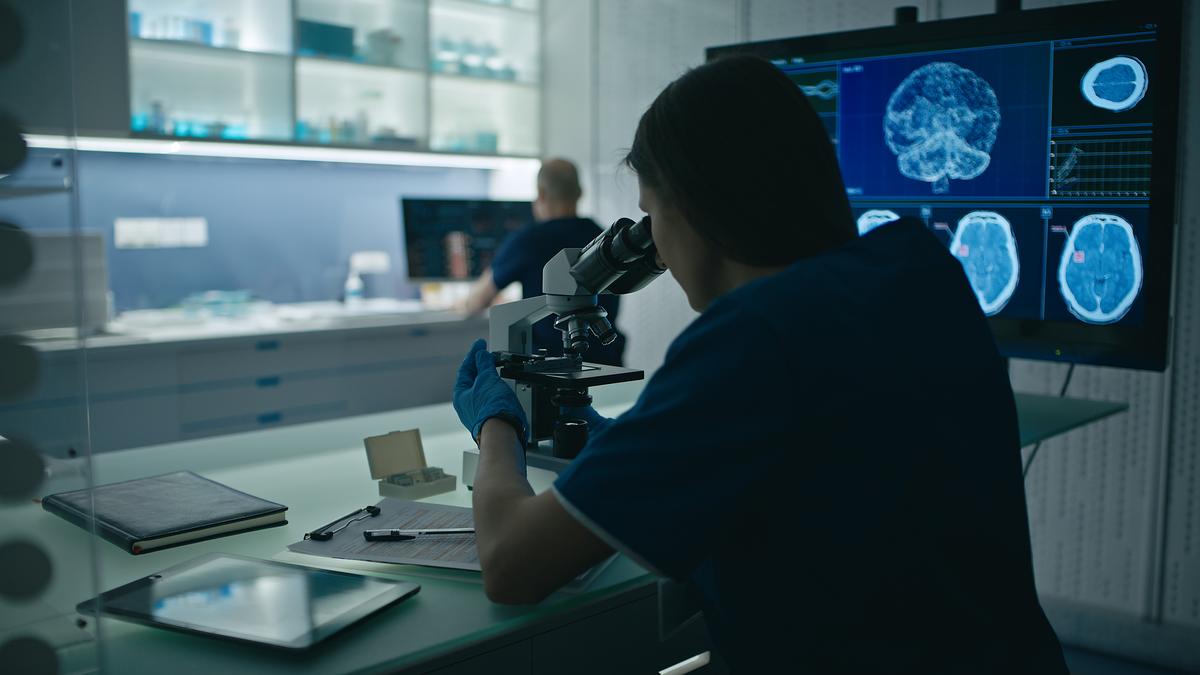
- 09 Jun 2025
In News:
In a landmark move to boost scientific research and innovation, the Finance Ministry of India recently announced a series of reforms easing the procurement norms for scientific equipment. This policy shift addresses long-standing grievances from the research community about sub-standard materials, procedural delays, and restricted autonomy due to rigid procurement rules under the Government e-Marketplace (GEM).
Background: Challenges with GEM Procurement
The GEM portal, launched to promote “Make in India” procurement, mandated government institutions to source all goods through it. However, scientists highlighted serious concerns about its inefficiency, especially the inability to procure high-quality, customised scientific instruments required for cutting-edge research. Delays in procurement approvals and the necessity to first prove non-availability on GEM further hindered project timelines and research output.
Key Policy Reforms and Amendments
To rectify these issues, the government amended the General Financial Rules (GFR), introducing the following major changes:
- Exemption from GEM Mandate:
- Select scientific institutions and universities are now allowed to procure equipment and consumables outside the GEM portal.
- This restores procurement autonomy to Directors, Vice-Chancellors, and Chancellors—similar to the pre-GEM era—enabling timely purchases from specialised, quality vendors.
- Enhanced Financial Autonomy:
- Without Quotation: Procurement limit increased from ?1 lakh to ?2 lakh for direct purchases.
- Purchase Committee Limit: Raised from ?10 lakh to ?25 lakh, enabling quicker institutional decision-making.
- Tender Enquiry Ceiling: Enhanced from ?50 lakh to ?1 crore, facilitating mid-level procurements efficiently.
- These changes reflect inflation adjustments and reduce the administrative burden on research institutions.
- Global Tender Enquiry (GTE):
- Directors and Vice-Chancellors are now authorised to approve GTEs up to ?200 crore, a responsibility earlier restricted to departmental Secretaries.
- This decentralisation helps avoid bottlenecks and streamlines large-scale procurements critical for advanced R&D.
Strategic Relevance and Broader Objectives
These reforms are strategically aligned with India’s aspirations under Atmanirbhar Bharat and its goal to emerge as a global science and technology leader. By reducing bureaucratic hurdles, enhancing institutional autonomy, and ensuring timely access to world-class research tools, the reforms empower innovation across sectors like health, defence, space, and agriculture.
Institutions benefitting from these measures include:
- Department of Science and Technology (DST)
- Department of Biotechnology (DBT)
- Council of Scientific and Industrial Research (CSIR)
- Department of Atomic Energy (DAE)
- Indian Council of Medical Research (ICMR)
- Indian Council of Agricultural Research (ICAR)
- Defence Research and Development Organisation (DRDO)
- Postgraduate research institutions under central and state universities
Conclusion
The revised GFR norms signify a progressive policy intervention aimed at creating a facilitative research ecosystem in India. By streamlining procurement, restoring institutional trust, and removing operational roadblocks, the government has responded positively to the scientific community's demands. As acknowledged by Science Minister Jitendra Singh, this reform is not just administrative; it is transformative—unlocking India's potential for innovation and scientific excellence.
India’s Decline in Extreme Poverty: A Decade of Significant Gains

- 08 Jun 2025
In News:
According to the latest World Bank estimates, India’s extreme poverty has sharply declined from 27.1% in 2011-12 to 5.3% in 2022-23, based on an updated $3/day consumption threshold adjusted for 2021 purchasing power parity (PPP). In absolute terms, the number of extremely poor people has reduced from 344.47 million to 75.24 million, indicating 269 million people were lifted out of extreme poverty during this period.
The progress is more striking when viewed under the previous poverty line of $2.15/day (2017 prices). Under this standard, the extreme poverty rate fell from 16.2% to 2.3%, translating to a drop in the number of poor from 205.93 million to 33.66 million—a reduction of 172 million individuals.
Even as the poverty threshold was raised globally, India managed to outperform most developing countries. The lower-middle-income (LMIC) poverty rate, measured at a higher threshold of $4.20/day, also fell substantially—from 57.7% in 2011-12 to 23.9% in 2022-23. This decline reduced the number of people under LMIC poverty from 732.48 million to 342.32 million over 11 years.
The fall in poverty occurred despite high inflation during the decade. When adjusted for domestic inflation, even the $3/day threshold (new benchmark) is higher than the inflation-adjusted $2.60/day from previous estimates, making the achievement more credible.
The World Bank estimates also reveal stark differences in poverty distribution:
- The top five populous states—Uttar Pradesh, Maharashtra, Bihar, West Bengal, and Madhya Pradesh—accounted for 65% of extreme poverty in 2011-12, but still made up 54% in 2022-23.
- Rural India still shows significant poverty, with 90% of rural individuals reporting average monthly per capita expenditures below Rs 5,763, and the bottom 5% class spending just Rs 1,677.
- Urban poverty is relatively lower, with 25.78% in the bottom 40%, compared to 45.44% in rural areas.
- Educational attainment remains a strong poverty determinant; in 2022-23, 35.1% of Indians without schooling lived below the LMIC poverty line, compared to 14.9% with post-secondary education.
In terms of non-monetary deprivation, India also recorded improvement. As per the Multidimensional Poverty Index (MPI), which considers factors such as access to education, electricity, water, and sanitation, multidimensional poverty fell from 53.8% in 2005-06 to 15.5% in 2022-23. NITI Aayog estimates it to be 11.28%, down from 29.17% in 2013-14.
To ensure continued tracking, NITI Aayog is planning a new income-based extreme poverty measure with broader consultation. Meanwhile, the Household Consumption Expenditure Survey (HCES) 2023-24 indicates a 45.4% rise in rural consumption and 38% in urban consumption, reinforcing the World Bank’s findings.
Conclusion
India’s remarkable poverty reduction over the last decade reflects successful economic reforms, social welfare schemes, and increased consumption. However, regional, educational, and rural-urban disparities persist, necessitating continued policy focus, data refinement, and inclusive growth strategies.
Kashmir Rail Link: A Strategic and Developmental Milestone
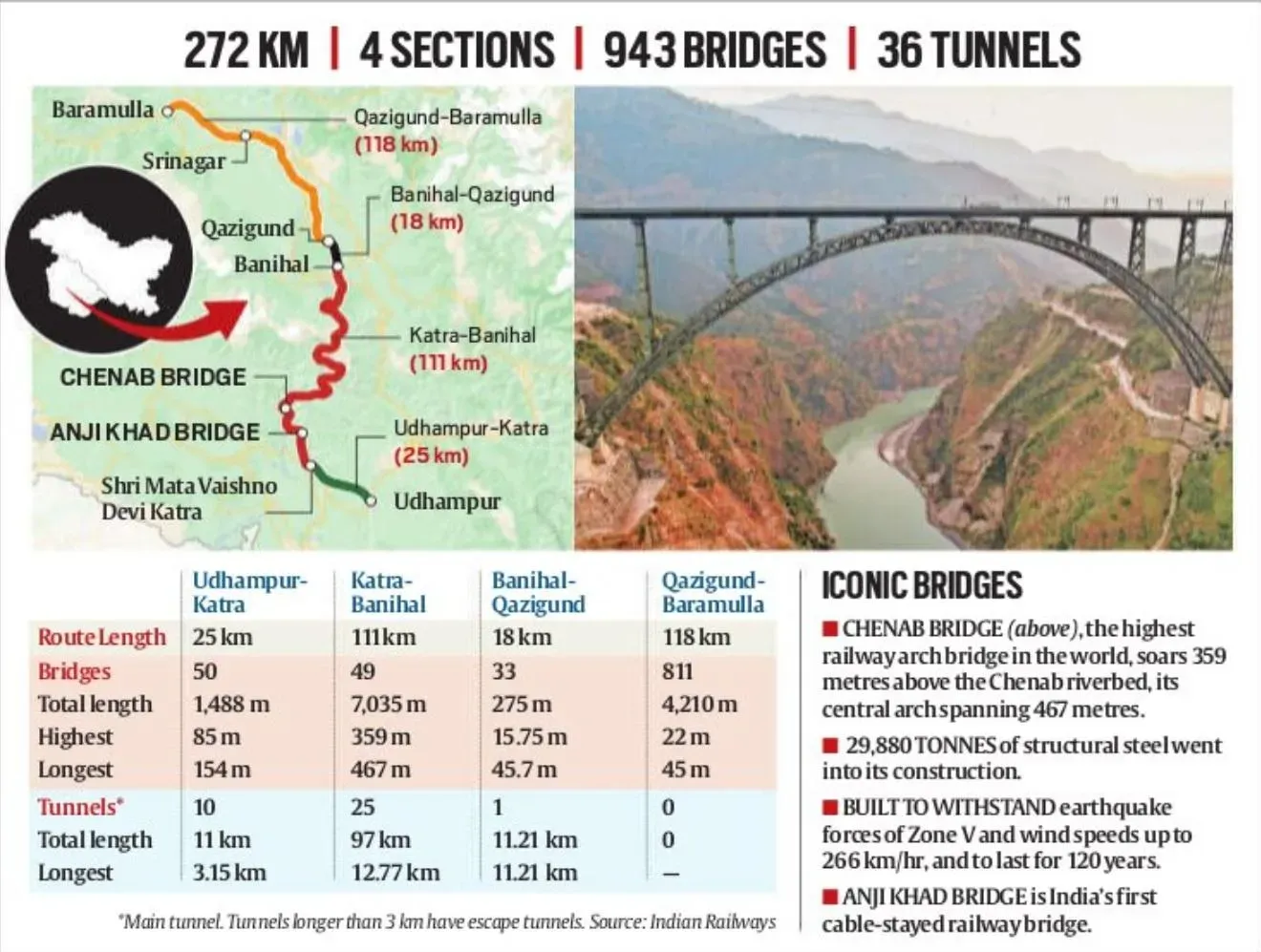
- 07 Jun 2025
In News:
The launch of the Vande Bharat Express between Katra and Srinagar by Prime Minister Narendra Modi marks a transformative chapter in Jammu and Kashmir’s infrastructural journey. The long-awaited completion of the Udhampur-Srinagar-Baramulla Rail Link (USBRL) is not merely a technological feat, but a symbol of national integration, economic upliftment, and inclusive development in the Kashmir Valley.
Historical Background
The evolution of rail connectivity in Jammu and Kashmir dates back to the colonial era when, in 1897, a 40–45 km rail line linked Jammu to Sialkot (now in Pakistan). Subsequent plans to extend railways to Srinagar in the early 20th century were shelved. After the 1947 Partition, Jammu was cut off from the rail grid as Sialkot became part of Pakistan. The region had to wait until 1975 for the inauguration of the Pathankot–Jammu line. The Jammu–Udhampur line, started in 1983, was completed only in 2004.
In 1994, the rail project was further extended to include Srinagar and Baramulla, and the USBRL was declared a national project in 2002, with the initial estimated cost of ?2,500 crore.
USBRL: Engineering Triumph
The fully operational 272 km USBRL has been completed at a revised cost of ?43,780 crore. It includes 36 tunnels, 943 bridges, and several record-setting engineering marvels in the seismically active, snow-covered terrain of the Shivalik and Pir Panjal ranges.
- Chenab Bridge: The world’s tallest railway arch bridge, 359 meters above the riverbed, surpassing even the Eiffel Tower. Designed to withstand wind speeds of 260 km/h and extreme temperatures, it spans 1,315 meters and has a life expectancy of 120 years.
- Anji Khad Bridge: India’s first cable-stayed rail bridge, located in Reasi, towers 331 meters above the river and stretches 725 meters. Its iconic inverted Y-shaped pylon is supported by 96 high-tensile cables.
- Tunnel T-49: At 12.77 km, it is India’s longest transport tunnel, located in Ramban district, designed to ensure seamless all-weather connectivity.
Strategic and Socio-Economic Significance
This rail link is a game-changer for the region. By reducing Katra–Srinagar travel time to just 3 hours, it ensures year-round, all-weather accessibility, even during harsh Himalayan winters. The connectivity is critical not only for civilians but also for the rapid movement of security personnel in this strategically sensitive region.
Economically, the rail link is poised to boost trade and tourism. It will facilitate the quicker and more cost-effective transport of local produce such as apples, walnuts, saffron, pashmina, and handicrafts, thereby integrating the Valley with national markets. Reduced logistics costs will also lower the prices of essential goods imported into Kashmir.
Way Forward
The upcoming extension to Jammu Tawi aims to further enhance nationwide connectivity to Srinagar. This project stands as a testament to India’s commitment to inclusive development, national unity, and strategic infrastructure in border regions. With its blend of engineering excellence and socio-political impact, the USBRL reinforces the vision of a Viksit Bharat that leaves no region behind.
Tiger Conservation in India
- 06 Jun 2025
In News:
India, which hosts over 70% of the world’s wild tiger population, holds a dual responsibility of pride and stewardship. The near-collapse of tiger numbers in 2006, with populations falling to around 1,400 and local extinctions in Sariska and Panna, prompted a national awakening. Strengthened interventions such as the formation of the National Tiger Conservation Authority (NTCA) and Project Tiger rejuvenation efforts helped India register over 3,600 tigers in the 2023 census, reflecting significant progress.
From Crisis to Recovery: Institutional Response
The disappearance of tigers due to poaching, habitat degradation, and poor monitoring led to structural reforms post-2006. The NTCA (established in 2005) ensured stricter protocols, better surveillance, and habitat restoration. India now boasts 53 Tiger Reserves, with central and southern states like Madhya Pradesh, Karnataka, and Uttarakhand emerging as conservation success stories.
Emerging Challenge: Prey Base Decline
Despite rising tiger numbers nationally, several reserves in eastern and central India—such as Guru Ghasidas, Indravati, Udanti-Sitanadi (Chhattisgarh), Palamau (Jharkhand), and Simlipal and Satkosia (Odisha)—have shown worrying trends of tiger decline. The core issue is not direct poaching but the fall in prey density, especially species like chital, sambar, and gaur. Scientific evidence indicates that tiger viability is closely tied to prey abundance, with a threshold of at least 10–15 prey animals per sq km required for stable populations.
Socioeconomic Roots of Ecological Depletion
Many affected reserves lie in poverty-stricken tribal regions. In the absence of alternative protein sources and sustainable livelihoods, communities turn to bushmeat hunting using traditional snares and traps. This not only reduces herbivore populations but also threatens predator survival. Palamau Reserve is a stark example where both large herbivores and tigers have nearly vanished under such pressures.
Institutional Recommendations and Ecological Restoration
The NTCA-WII 2023 report recommends short-term herbivore breeding enclosures but recognizes their limitations in rewilding success. A sustainable solution lies in habitat quality enhancement and involving communities in conservation. Some reserves still retain dense forests, providing an ecological foundation for revival. The decline of left-wing extremism in many areas also opens avenues for focused conservation interventions.
Towards Inclusive Conservation: Eco-Tourism and Livelihoods
Prosperous reserves like Bandhavgarh and Ranthambore benefit from conservation-linked tourism and community participation. In contrast, remote and underdeveloped areas lack such economic linkages. Promoting inclusive eco-tourism, skill development, and income-generation activities—such as SHGs, poultry farming, and forest produce marketing—can transform local attitudes.
Way Forward: Integrated, People-Centric Approaches
India must adopt multidimensional strategies combining ecological, institutional, and social measures:
- Implement prey recovery plans in Tiger Conservation Plans (TCPs).
- Provide targeted funding and technical support to underperforming states.
- Restore grasslands, ensure wildlife corridors, and adopt technology (drones, AI) for monitoring.
- Recognize community forest rights, promote Gram Sabha governance, and expand MGNREGA to conservation-linked jobs.
Conclusion
India’s tiger conservation success is laudable but remains precarious if prey depletion continues unchecked. The path ahead demands a shift from protectionism to participatory conservation—rooted in equity, ecological integrity, and community empowerment. The survival of the tiger is not merely a wildlife concern, but a test of India’s commitment to sustainable development and inclusive environmental governance.
Population Census 2027
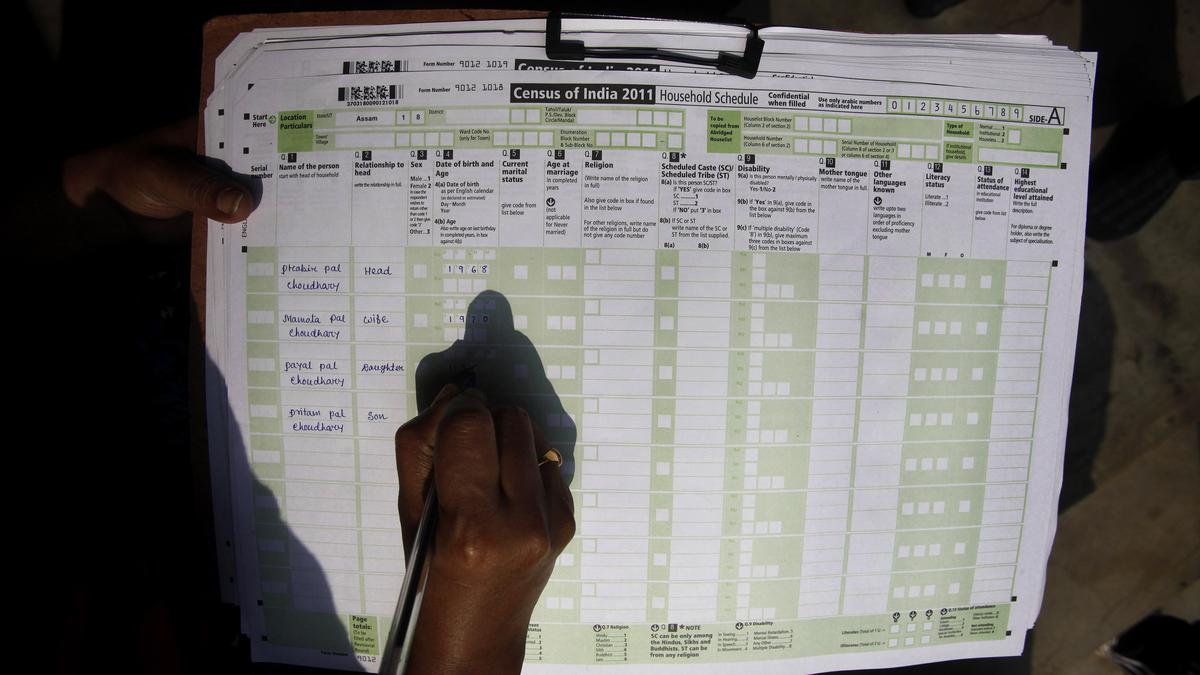
- 05 Jun 2025
In News:
India’s next population census is scheduled to be completed by March 1, 2027, marking a historic return to the decennial exercise after a 16-year gap—the longest in independent India’s history. Announced by the Ministry of Home Affairs (MHA), this census will be India’s first digital census and the first to include caste enumeration since Independence.
The census will be conducted intwo phases:
- House Listing and Housing Schedule
- Population Enumeration (including caste data)
The enumeration process will run from April 1, 2026 to February 28, 2027, with March 1, 2027, set as the reference date for most of India. For Ladakh and snow-bound areas of J&K, Himachal Pradesh, and Uttarakhand, the reference date will be October 1, 2026.
This exercise will be conducted under the Census Act, 1948 and the Census Rules, 1990. A gazette notification, expected on June 16, 2025, will formally announce the schedule. Around 25–30 lakh enumerators, largely schoolteachers, will be retrained to use a custom mobile app—a key component of the digital data collection process.
A major inclusion in this census is caste enumeration, extending beyond the current Scheduled Caste (SC) and Scheduled Tribe (ST) data. A separate input field will record caste data for all categories, making it a potentially transformative tool for targeted welfare policies and social justice initiatives.
However, the 2027 Census is not just a demographic exercise—it holds critical constitutional and political significance, especially in the context of delimitation and women's political reservation.
Under Articles 81 and 82 of the Constitution, the next delimitation of Lok Sabha and State Assembly constituencies must be based on the first census after 2026. The current 543 Lok Sabha seats are still based on the 1971 Census. The 42nd Constitutional Amendment (1976) had frozen seat redistribution, which was extended by the 84th Amendment (2002) until after 2026.
Once census data is finalized (likely by late 2027), Parliament must pass a Delimitation Act, following which a Delimitation Commission—headed by a retired Supreme Court judge and including the Chief Election Commissioner—will be constituted. This commission will determine the new seat allocation formula based on population per constituency.
Importantly, the implementation of 33% reservation for women in Parliament and State Assemblies, as mandated by the Women’s Reservation Act, is contingent upon the completion of this delimitation exercise.
This has triggered concerns, particularly from southern states like Tamil Nadu, which have seen slower population growth due to effective family planning. Redistribution based solely on population may reduce their parliamentary representation, leading to demands—such as by Tamil Nadu CM M.K. Stalin—for extending the status quo based on the 1971 census until 2056.
Political opposition has also criticized the delayed timeline, with Congress terming the 23-month postponement from 2021 as administrative inefficiency.
Moreover, there was no mention of updating the National Population Register (NPR), which is the first step towards the controversial National Register of Citizens (NRC).
In sum, Census 2027 is not just a statistical necessity but a politically sensitive and constitutionally mandated process, central to the future of electoral representation, gender justice, and federal balance in India.
India’s Green Economy: A Catalyst for Employment and Sustainable Development
- 04 Jun 2025
In News:
India’s transition to a green economy is not only central to achieving its environmental and climate goals but is also emerging as a powerful engine for economic growth and employment generation.
According to a recent report by NLB Services, India’s green sector is expected to generate approximately 7.29 million new jobs by FY2027–28, with the figure projected to rise to 35 million by 2047, aligning with India’s long-term net-zero commitments.
Understanding the Green Economy
A green economy encompasses sectors and activities that contribute to ecological sustainability, low-carbon development, and resource efficiency, while also promoting inclusive employment. It integrates environmental goals with economic planning, thus creating green jobs in areas such as renewable energy, electric mobility, sustainable construction, waste management, and green agriculture.
Sectoral and Regional Dynamics
The most significant employment potential lies in industries such as renewable energy, electric vehicles (EVs), green infrastructure, sustainable textiles, and waste-to-energy solutions. These sectors have witnessed rising investments and policy focus under national missions such as PM-KUSUM, Faster Adoption and Manufacturing of Hybrid and Electric Vehicles (FAME), and the National Hydrogen Mission.
While metropolitan areas like Mumbai, Bengaluru, and Delhi remain hubs for green employment, tier II and III cities are poised to play a crucial role in the decentralisation of the green economy. Cities such as Jaipur, Coimbatore, Bhubaneswar, Visakhapatnam, and Indore are projected to account for 35–40% of the green job creation by FY28, primarily in logistics, warehousing, sustainable agriculture, and urban waste management.
Evolving Skill Demands
The transition towards green employment is redefining workforce skill requirements. Modern green jobs demand a blend of environmental sustainability expertise and technological proficiency, particularly in AI, IoT, GIS, blockchain, and data analytics. This digital integration is reshaping job profiles and creating pathways for future-ready employment.
In response, industries are shifting hiring strategies to focus more on skill-based recruitment rather than conventional degrees. There is also a growing emphasis on industry-academia collaborations to align curricula with the evolving demands of the green economy, thus fostering climate-literate and digitally equipped professionals.
Gender Inclusion and Equity Challenges
Despite the promising employment potential, women currently constitute only 11–12% of the green workforce in India. Barriers include limited access to STEM education, workplace safety concerns, and socio-cultural constraints. However, progressive employers are increasingly adopting inclusive hiring practices, promoting women-centric skill development programmes, and partnering with training agencies to build a more diverse and equitable green talent pipeline. These efforts are expected to improve female participation by 12–15% in the next 5–6 years.
Economic Significance
India’s green economy is expected to contribute significantly to national GDP. Its valuation is projected to reach $1 trillion by 2030, and expand to $15 trillion by 2070, supporting India’s target of achieving net-zero emissions by 2070. Thus, it offers a dual dividend—economic prosperity and environmental security.
Conclusion:
India’s green transition presents a transformative opportunity to simultaneously address climate change, unemployment, and regional disparities. With appropriate policy support, capacity building, and inclusivity, the green economy can become the bedrock of sustainable and equitable growth.
Technology Industry and Climate Goals

- 03 Jun 2025
Introduction
The global technology sector, while being a driver of economic growth and innovation, is also a significant contributor to greenhouse gas (GHG) emissions. With the rapid expansion of cloud computing and digital services, data centres—the backbone of the digital economy—consume massive amounts of energy, primarily for cooling.
A recent landmark study by Microsoft and WSP Global, published in Nature, highlights the potential of advanced cooling technologies to significantly reduce the environmental footprint of data centres.
The Problem: Heat and Emissions from Data Centres
- Energy Consumption: In modern data centres, cooling systems consume nearly as much electricity as computing itself.
- Heat Management: As chips become smaller and faster, they generate more heat. Without effective cooling, systems overheat, leading to failure and reduced efficiency.
- Climate Targets: The Information and Communications Technology (ICT) sector aims to reduce emissions by 42% by 2030 (from 2015 levels) and achieve net-zero by mid-century.
Cooling Innovations: The Game-Changers
1. Cold Plate Cooling (Direct-to-Chip Cooling)
- Coolant flows through microchannels on a plate attached directly to the chip.
- Reduces the need for energy-intensive air conditioning.
- Heat is transferred away efficiently and silently.
2. Immersion Cooling
- Entire hardware systems are submerged in thermally conductive, non-conductive liquid.
- Uses one-phase (liquid remains stable) or two-phase (liquid vaporises and condenses) systems.
- Ensures near-total heat dissipation and longer component life.
Environmental Impact (Study Findings):
Compared to traditional air cooling:
- GHG Emissions ↓ by 15–21%
- Energy Use ↓ by 15–20%
- Water Consumption ↓ by 31–52%
With 100% renewable energy:
- Emissions ↓ by 85–90%
- Water use ↓ by 55–85%
Tech Industry’s Broader Climate Actions
- Carbon Credits: Google, Netflix, and others invest in verified carbon offsets.
- Blockchain for Carbon Markets: Ensures transparency; used by Indian IT firms for ESG compliance.
- Renewable Energy: Tech giants like Apple, Meta, and Amazon power operations with green energy.
- Indian Leadership: Infosys, Reliance, and Tech Mahindra lead in green operations using AI and energy-efficient systems.
Challenges and Limitations
- Lifecycle Trade-offs: Coolant production and disposal can offset benefits.
- Capital Cost: Retrofitting old data centres is expensive.
- Regulatory Issues: Lack of global standards for coolants and fragmented carbon credit policies.
- Dependence on Grid: Benefits are reduced if electricity is still coal-based.
- Slow Deployment: Complex designs and supply chain delays hinder implementation.
Way Forward
- Life Cycle Assessments (LCAs): Evaluate true environmental costs over the product lifecycle.
- Unified Carbon Standards: Develop global frameworks for carbon credit verification and climate disclosures.
- Government Support: Provide tax incentives, green finance, and subsidies for early adopters.
- Strengthen R&D: Focus on low-impact coolants and AI-driven cooling systems.
- Public-Private Partnerships: Encourage innovation through collaboration among tech firms, startups, and governments.
Conclusion
The technology industry stands at a crossroads where sustainable innovation is essential. Cooling technologies like cold plates and immersion cooling, coupled with renewable energy adoption and carbon offset mechanisms, can enable the ICT sector to significantly reduce its environmental footprint. With effective policy support and strategic innovation, the tech sector can become a pillar of global climate action.
Urban Flooding in India: A Growing Challenge and the Path to Resilience
- 02 Jun 2025
In News:
Urban flooding has emerged as a critical challenge in India’s rapidly urbanising landscape. Cities like Delhi, Mumbai, Bengaluru, and Chennai face recurrent inundations, leading to loss of life, infrastructure damage, and economic disruptions. This crisis stems from a combination of outdated urban drainage systems, rapid concretisation, encroachment on natural water bodies, and climate change-induced extreme weather events.
The Urban Drainage Crisis
Urban drainage refers to the infrastructure that manages rainwater and prevents flooding. However, over 70% of India’s urban areas lack scientifically designed stormwater systems (MoHUA, 2019). Mumbai’s stormwater drains, originally built in the 1860s, can handle only 25 mm of rainfall per hour, while rainfall events often exceed 100 mm/hour. Delhi's drainage is based on 1976 norms, incapable of handling current rainfall intensities, such as the 185.9 mm received in a single day in May 2025. Bengaluru’s network is outdated, with over 65% of its lakes encroached and connected stormwater drains severely undersized.
Key causes of urban flooding include:
- Natural Factors: Intensifying short-duration rainfalls due to climate change, low-lying topographies.
- Man-made Factors: Unplanned urbanisation, loss of wetlands, illegal constructions, outdated design standards, infiltration of sewage into stormwater lines, and poor maintenance.
Economic and Environmental Impacts
Floods cause the highest economic damage among natural disasters in India. In 2024, Mumbai received 300 mm of rain in six hours, crippling the city’s transport and health systems. Chennai’s monsoon floods in 2024 led to massive waterlogging due to blocked drains and concretised surfaces.
Urbanisation has drastically increased impervious surfaces, reducing natural infiltration and increasing runoff. Nashik, for instance, witnessed rapid impervious expansion, contributing significantly to urban flooding.
Technological Solutions: GIS and Remote Sensing
To tackle urban flooding, advanced tools like Geographic Information Systems (GIS) and remote sensing are being deployed:
- Satellite Monitoring: ISRO and NRSC use high-resolution imagery to monitor rainfall, land use, and flood-prone zones. LiDAR-generated Digital Elevation Models (DEMs) help map vulnerable areas.
- Hydrological Modelling: Tools like HEC-HMS and HEC-RAS simulate flood scenarios and help plan mitigation strategies.
- Urban Drainage Mapping: GIS assists in identifying drainage bottlenecks and encroachments. For instance, GIS studies in Ahmedabad and West Bengal’s Keleghai Basin have enabled flood risk zoning.
Government Interventions
Several policies and programs support flood mitigation:
- AMRUT 2.0 and Smart Cities Mission: Promote integrated stormwater systems and sustainable urban drainage.
- Model Building Bye Laws (2016): Mandate rainwater harvesting.
- Jal Shakti Abhiyan, Atal Bhujal Yojana, and Amrit Sarovar Mission: Encourage water body rejuvenation and groundwater recharge.
- NDMA Guidelines: Recommend real-time flood forecasting and risk mitigation using satellite data.
Future Directions
Moving forward, flood resilience must be built through:
- Green Infrastructure: Restoring wetlands, using bioswales and permeable pavements.
- Smart Drainage Systems: IoT-enabled sensors for real-time monitoring and early warnings.
- AI Integration: Enhancing prediction models using real-time meteorological data.
- Policy Enforcement: Preventing illegal constructions on floodplains and drainage channels.
- Community Engagement: Raising awareness on waste disposal and flood preparedness.
Conclusion
Urban flooding in India reflects the failure to integrate environmental planning into urbanisation. However, with the aid of emerging technologies, inter-agency coordination, and proactive governance, Indian cities can transform from reactive flood responses to resilient urban systems. A holistic approach combining infrastructure, nature-based solutions, and data-driven policies is essential for sustainable urban development.
Preserving Glaciers: A Cry for Climate Justice and Water Security

- 01 Jun 2025
In News:
In 2025, the United Nations has declared the year as the International Year of Glaciers’ Preservation, underscoring the urgent global need to address the retreat of glaciers. This critical issue was the focus of the International Conference on Glaciers’ Preservation held in Dushanbe, Tajikistan, co-hosted by the Republic of Tajikistan with the support of the UN and attended by leaders and experts from across the globe.
Glaciers, often referred to as the “water towers of the world”, store nearly 70% of Earth’s freshwater. However, accelerating glacier melt—driven by global warming—has become a slow-moving catastrophe. Since 1975, over 9,000 billion tons of glacial ice have been lost. The period from 2022 to 2024 marked the highest recorded glacier mass loss, with many smaller glaciers projected to vanish entirely within this century. This phenomenon threatens not only mountain ecosystems but also global water security, food systems, biodiversity, infrastructure, and human livelihoods.
Developing countries, particularly those in Asia, Africa, and Latin America, face disproportionate vulnerabilities due to glacier retreat. Communities dependent on glacier-fed rivers for drinking water, irrigation, and hydropower are witnessing increased poverty, forced migration, and infrastructure damage. Melting glaciers also contribute significantly to sea-level rise, placing coastal cities and low-lying regions at risk of displacement and flooding, as seen in Nigeria’s Niger Delta and Lagos.
The conference served as a clarion call to transition from pledges to concrete action. It recognized that 83% of global emissions that require mitigation lie with just 35 countries, emphasizing the need for collective ambition. The summit also launched the Decade for Cryosphere Science (2025–2034) and advocated for the establishment of a UN Glacier Preservation Fund to ensure sustained, long-term financing for adaptation.
Key recommendations included:
- Integration of glacier preservation into national climate policies, especially Nationally Determined Contributions (NDCs) and National Adaptation Plans (NAPs).
- Development of early warning systems and predictive tools for climate-related disasters in mountainous regions.
- Investments in data-driven adaptation, using AI and hydrological models to forecast risks and optimize resilience strategies.
- Promotion of gender-inclusive water governance, especially involving women in glacial and water-related decision-making.
- Establishment of hydro-meteorological services for glacier-dependent regions to safeguard water access and ensure resilience.
The Deputy Secretary-General of the UN stressed that resilience pays — every dollar spent on adaptation strengthens economies, protects livelihoods, and mitigates future losses. The upcoming Fourth UN Conference on Financing for Development in Seville and COP30 in Brazil were identified as critical moments to elevate financing and policy commitments.
In conclusion, glacier loss is not merely an environmental concern but a humanitarian and developmental crisis. The protection of glaciers is central to achieving SDG 6 (Clean Water and Sanitation) and must be addressed with the urgency, equity, and international solidarity it demands. The world must act now—so that future generations do not inherit a planet where glaciers and the lifelines they sustain have become a relic of the past.
